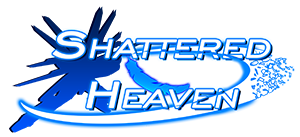Making Season 2
I hate that it’s been two and half years since the season 1 finale, “Broken Promises”. Episode 6 debuted in August of 2016 and it was the last episode within the main plot of the series. Before this, I was able to produce/animate episodes pretty quickly for someone that balanced an animated series in his spare time. Maybe it’d be about a month, month and a half to get a full episode’s animatic finished and then another month to 2 months to handle the clean up of said episode. At that point I’d hand the episode and the audio files over to my sound designer and she’d take care of the audio polish. So 4, maybe 5 months depending on the episode length and the difficulty of it. If I kept with this routine then it’s safe to say Episode 7 would have been out early 2017. So what happened?
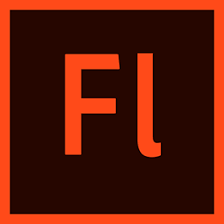 Adobe Flash and the Ceiling
Adobe Flash and the Ceiling
It’s called “Animate” now, but for the longest time it was just “Flash”. Started out as “Macromedia Flash” before Adobe bought them out and absorbed the program into their “Creative Suite” bundle.
Flash was and still is pretty basic for animation and a good place to start. It gives you the bare essentials of what you need, a timeline and tools to draw. But eventually, depending on what you’re looking to do, it can become stifling. I won’t go too much into the early days of SH production, that’s not the point here. But I will touch on the basics.
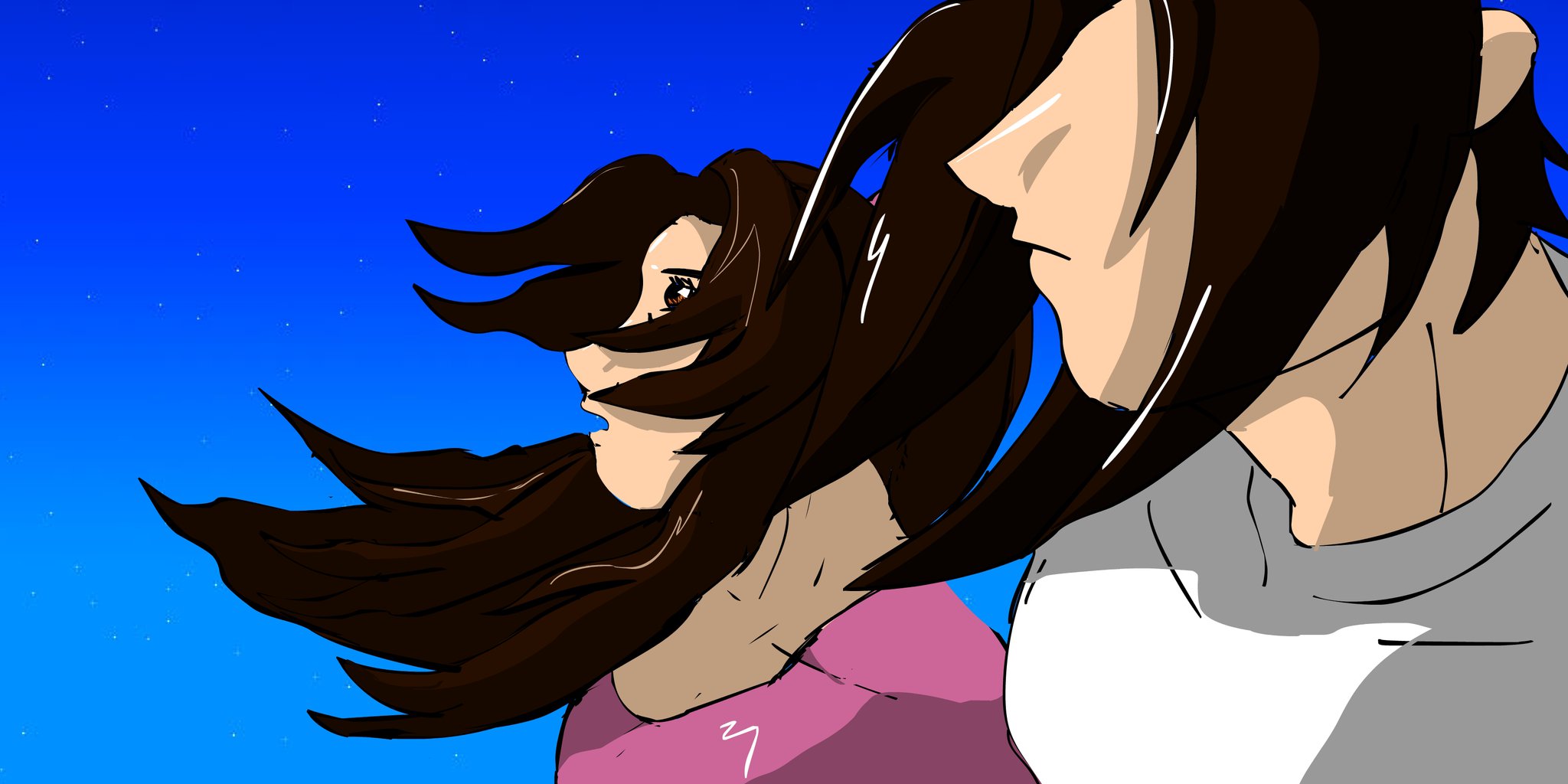
For the sake of my own sanity I’m going to very briefly touch on the first Shattered Heaven outing back in 2006. I didn’t know how to animate, so I just “jumped right into it. Flash was easy enough to use. Things were rough back then.
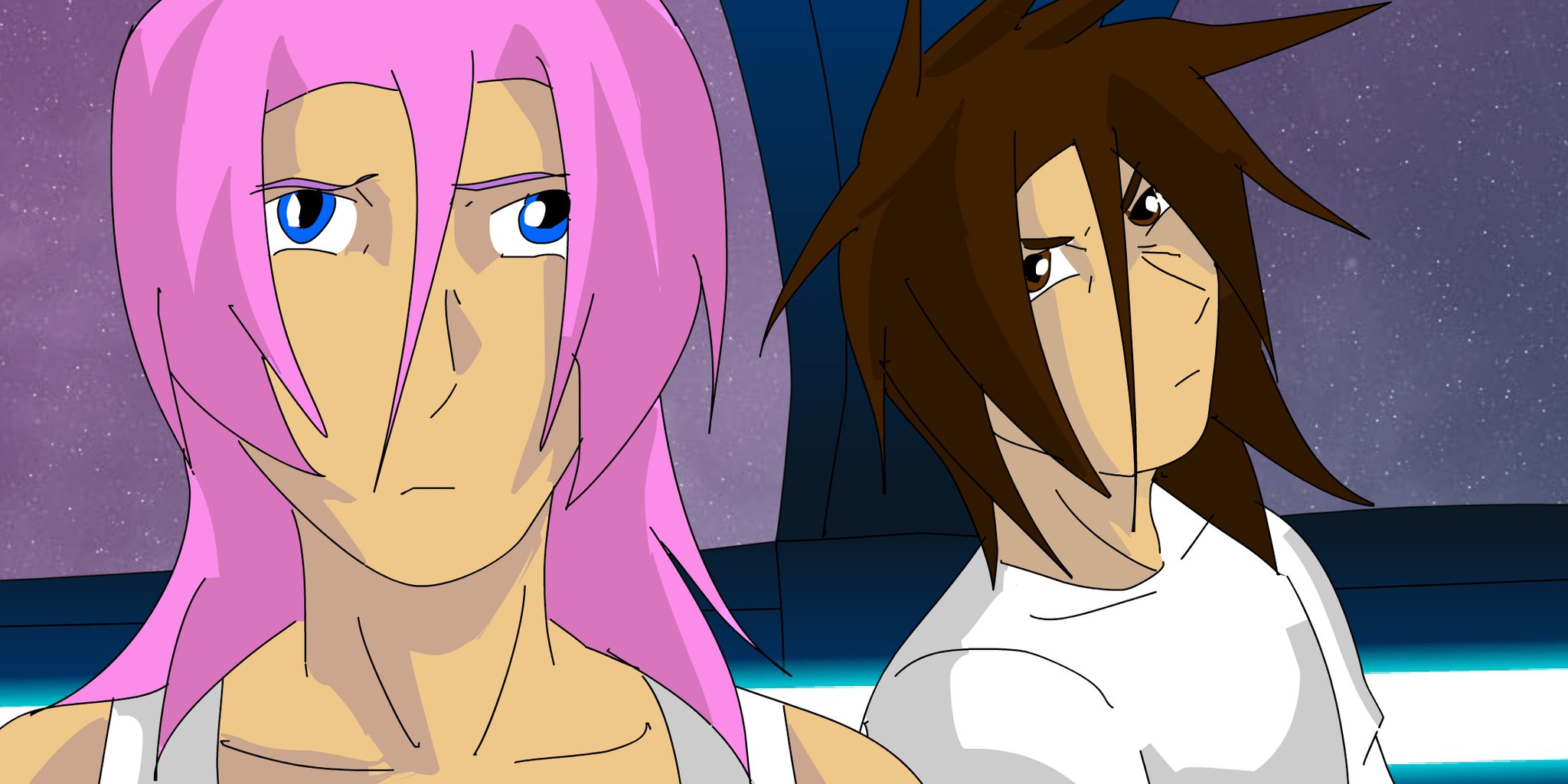
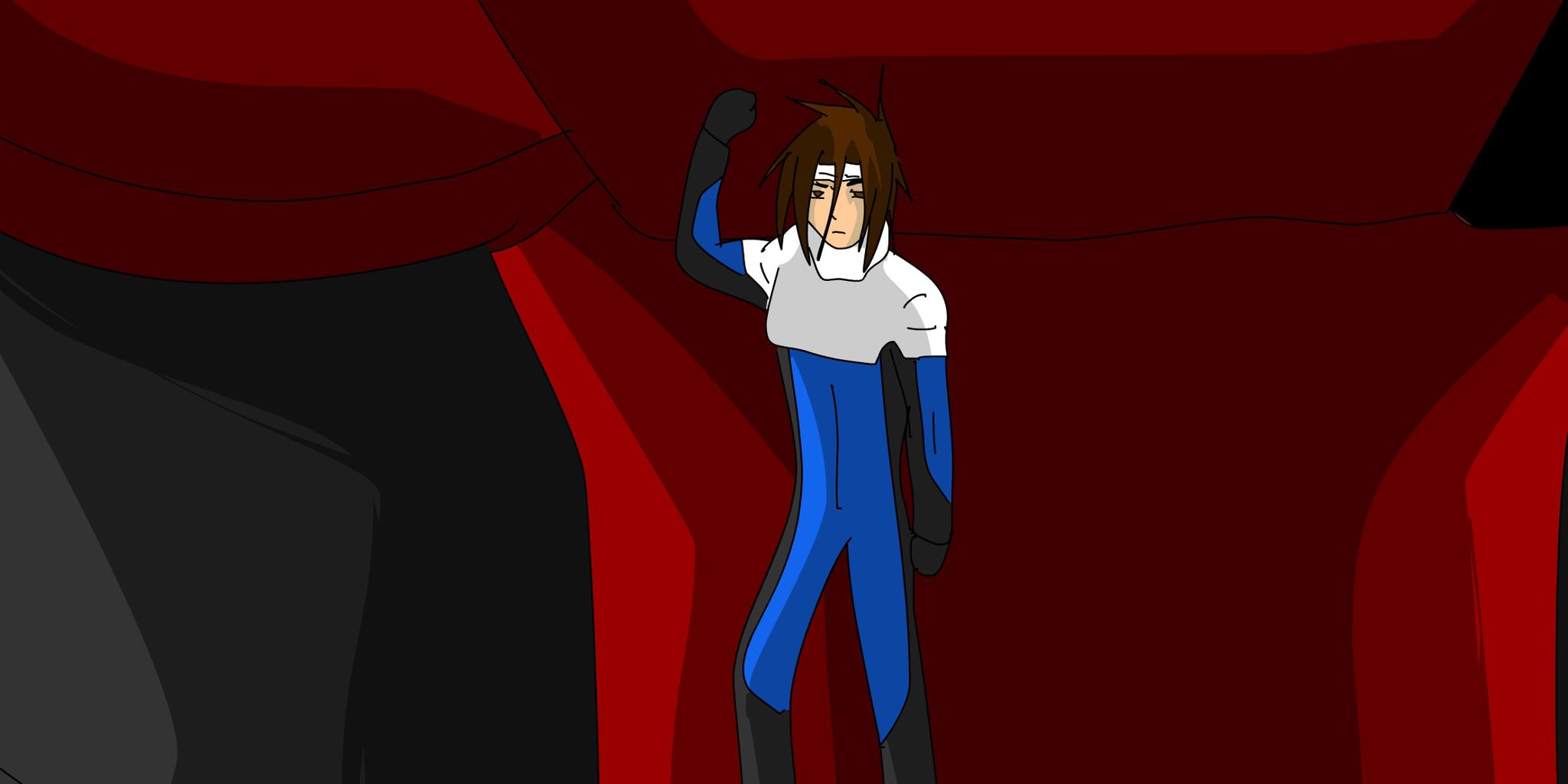
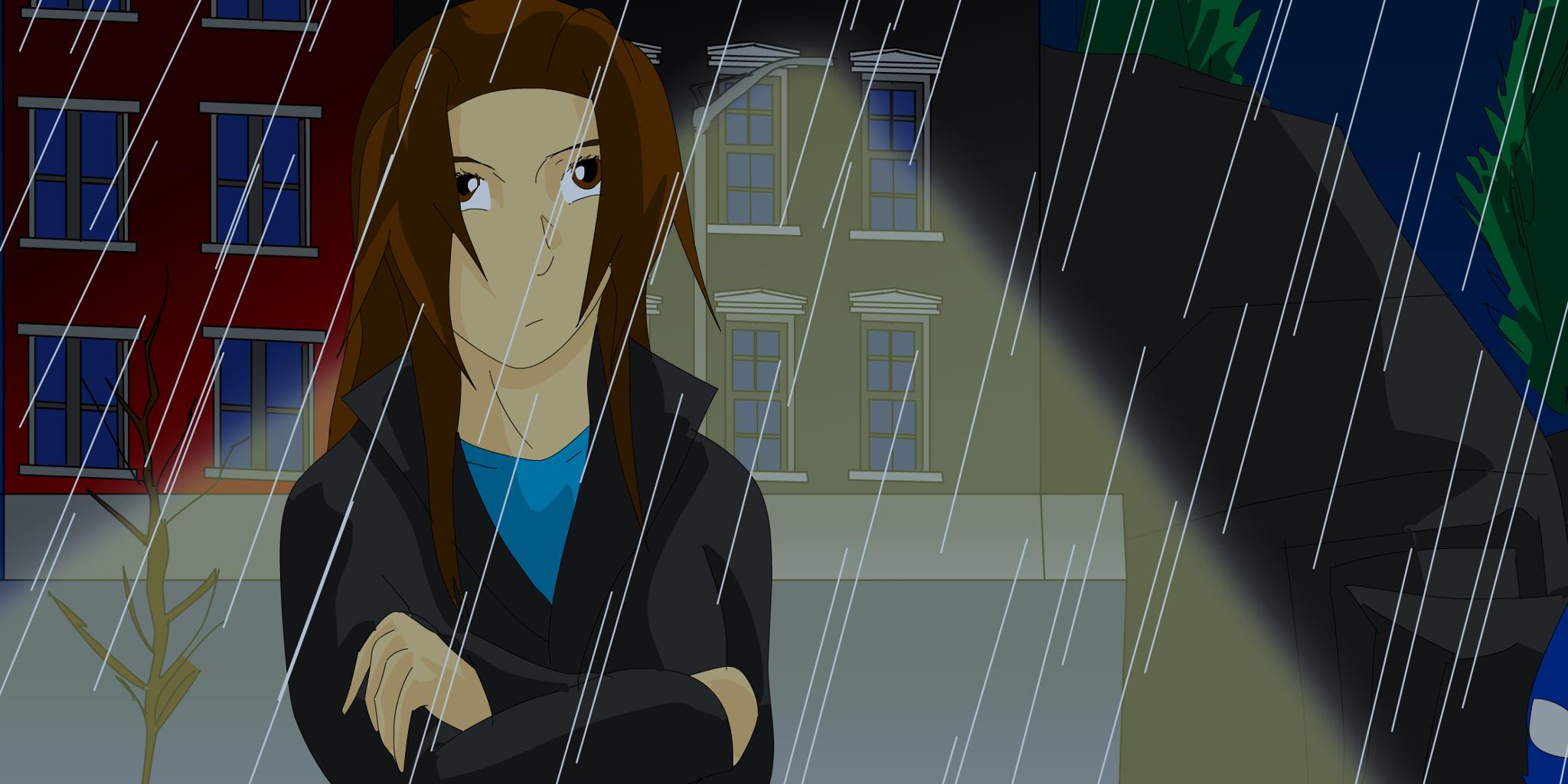
I ended up gravitating to the “Pencil tool” over the paintbrush. I guess I liked the thinner lines for some reason. Even though my own line art was pretty garbage. The first series had its issues and only went for 4 complete episodes before I pulled the plug.
In 2012 I rethought everything and decided to do it all over from scratch. Which is what the current Shattered Heaven series is. I was still using Flash CS6 at the time and it’s what I used all the way up until Minisode 4. 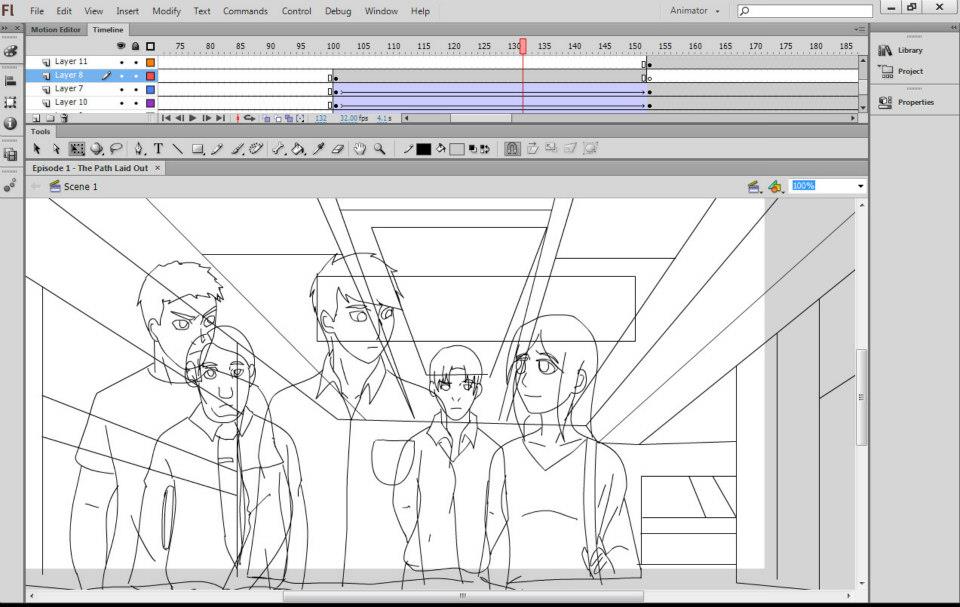
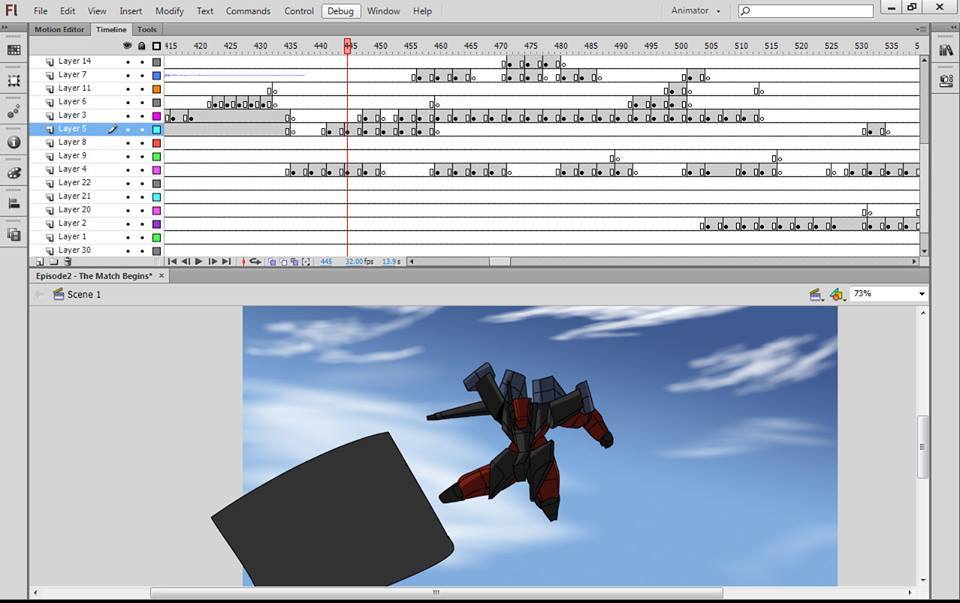
The timeline was easy to navigate and frames were simple to understand. As the episodes continued, my lineart got a bit cleaner and my animations started to get smoother. I tried experimenting more and more. 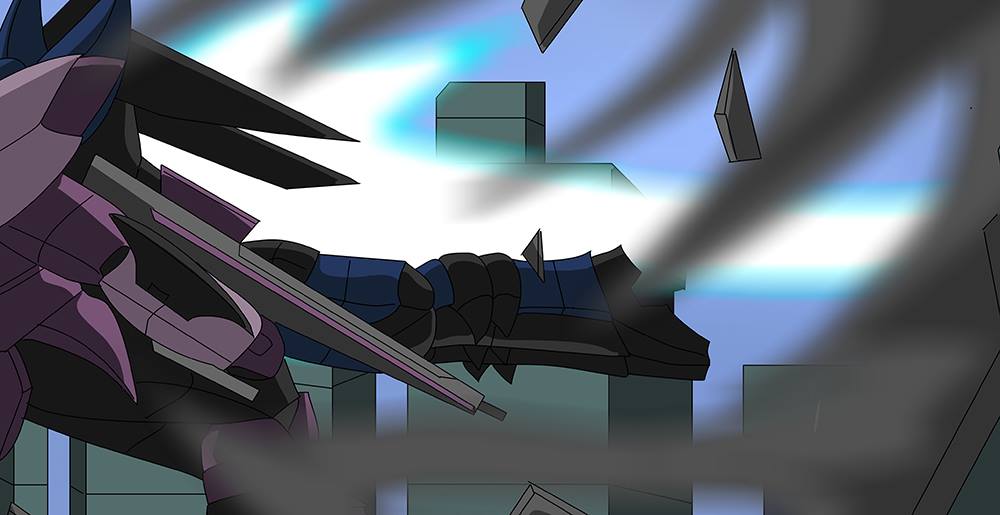
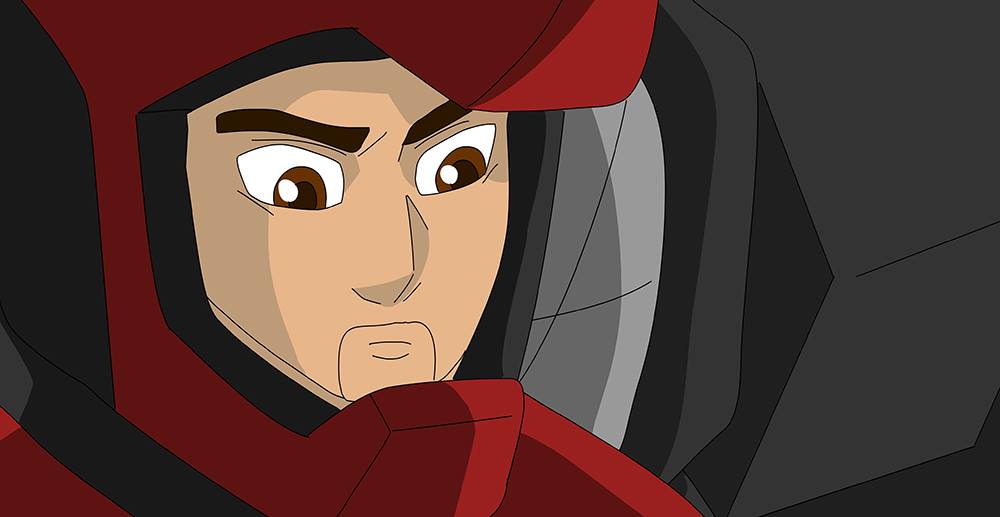
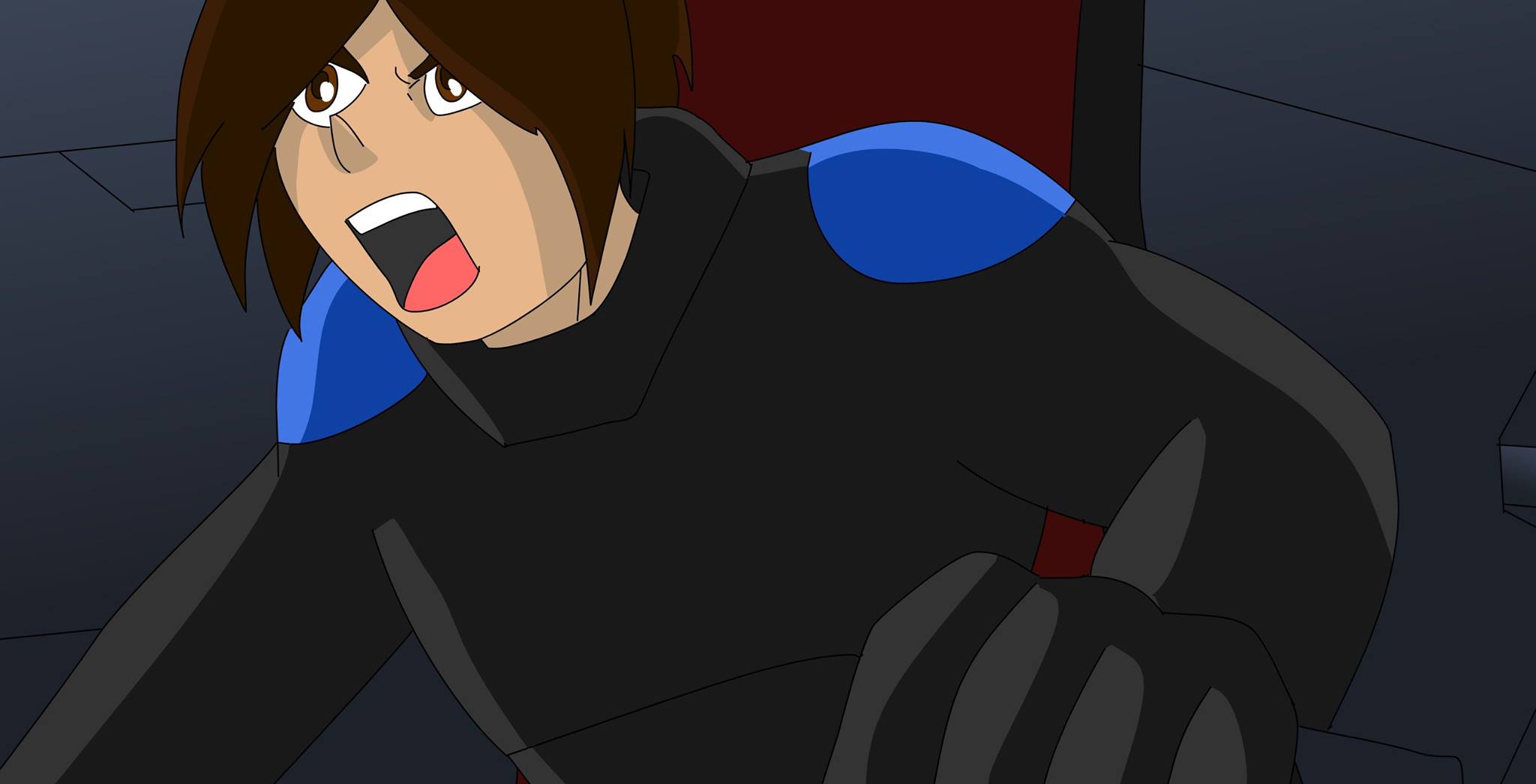
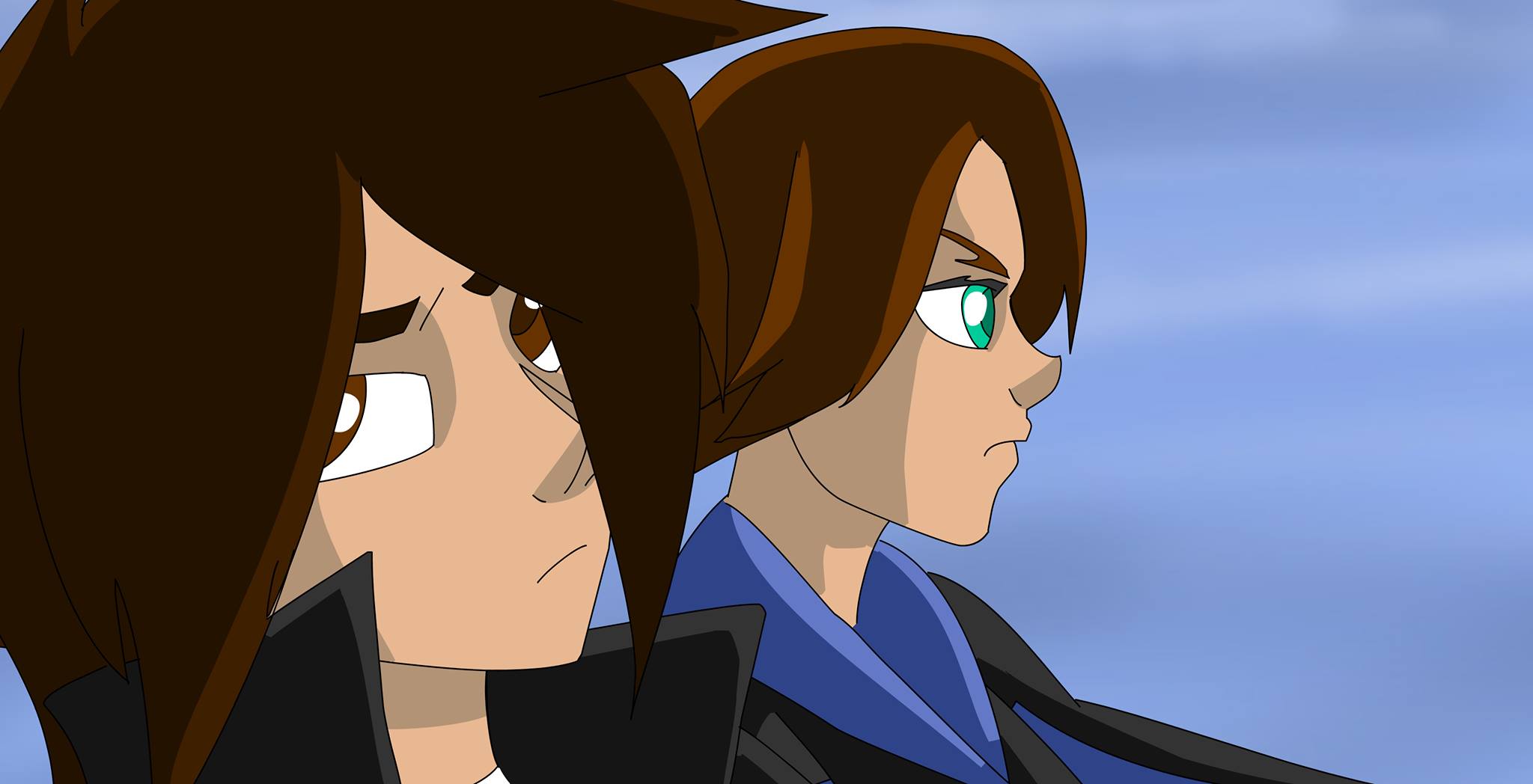
It was around Episode 4 that the series shifted into a more positive territory. The animation got cleaner and I started experimenting more with movement. Episode 5 was a heavily action oriented episode and my most challenging to date. It was around here that for me personally, Flash was starting to show that I was reaching a ceiling with it. My own art was starting to grow a little, by this time I was dabbling with Clip Studio Paint for drawing, something I hadn’t done in a long time. I was mainly focusing on animation and wasn’t really working to improve my art style.
So I was doing double duty around 4 and 5. I was animating in Flash while working on art in CSP. At first there wasn’t much difference.
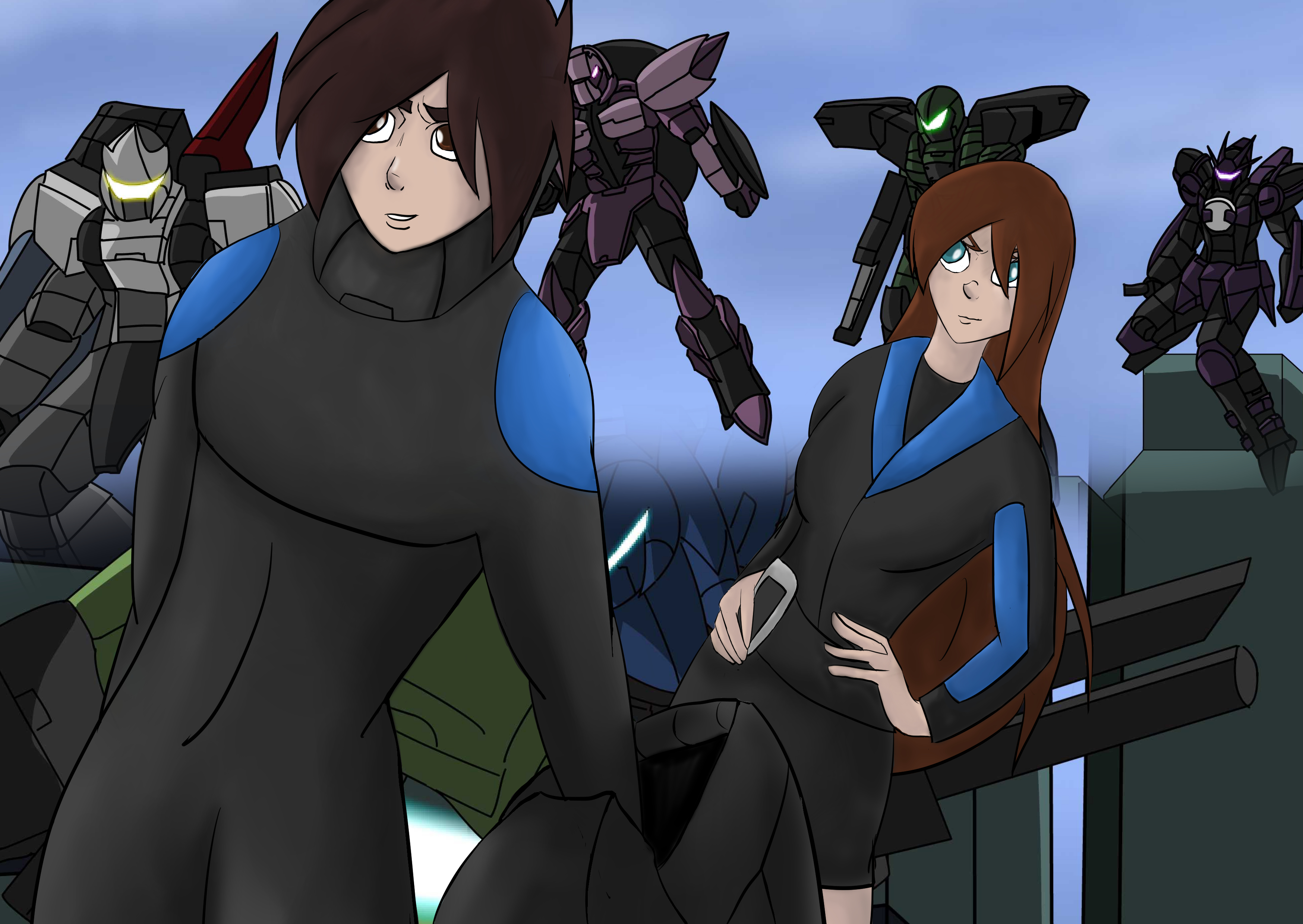
Episode 4’s “cover”. I was still getting used to CSP’s brushes and what would eventuallly feel natural to me.
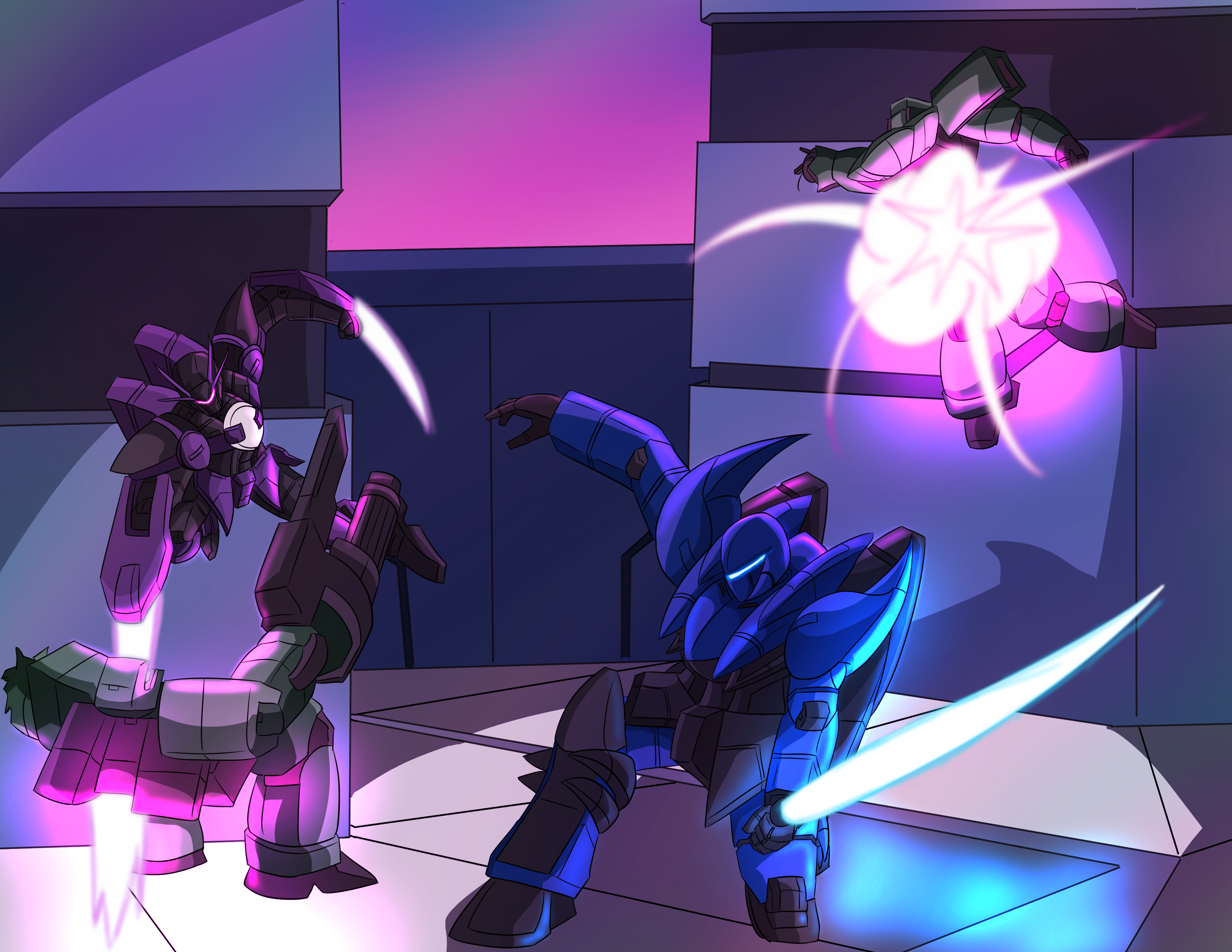
Episode 5’s cover. By this time, I was getting far more used to CSP and there was a noticeable difference between my art here and my art in Flash. This was the first time I started to wonder if I could animate at a higher art quality than I was already doing in Flash. I had to pinpoint what it was in Flash that was getting in my way. Now this is pretty much just a “me” issue, there are plenty of better animators/artists that can get ridiculous quality out of Flash so it’s obviously doable. But for me, the paintbrush tool didn’t feel comfortable with my style, and the pencil tool was too rough. Flash would “auto” correct lines, so there’s was so many times where I was fighting with the program to get the lines I wanted. But with CSP, it just did what I wanted at a natural flow. It just felt “better”.
Around this time I was preparing to work on the season finale.I wanted it to look different than the earlier episodes. I ended up using a lighter line art opacity to mimic some of the look from other animes like Naruto. The writing was on the wall though, I knew I wanted to up the quality down the line even more and it was obvious Flash wasn’t going to cut it.
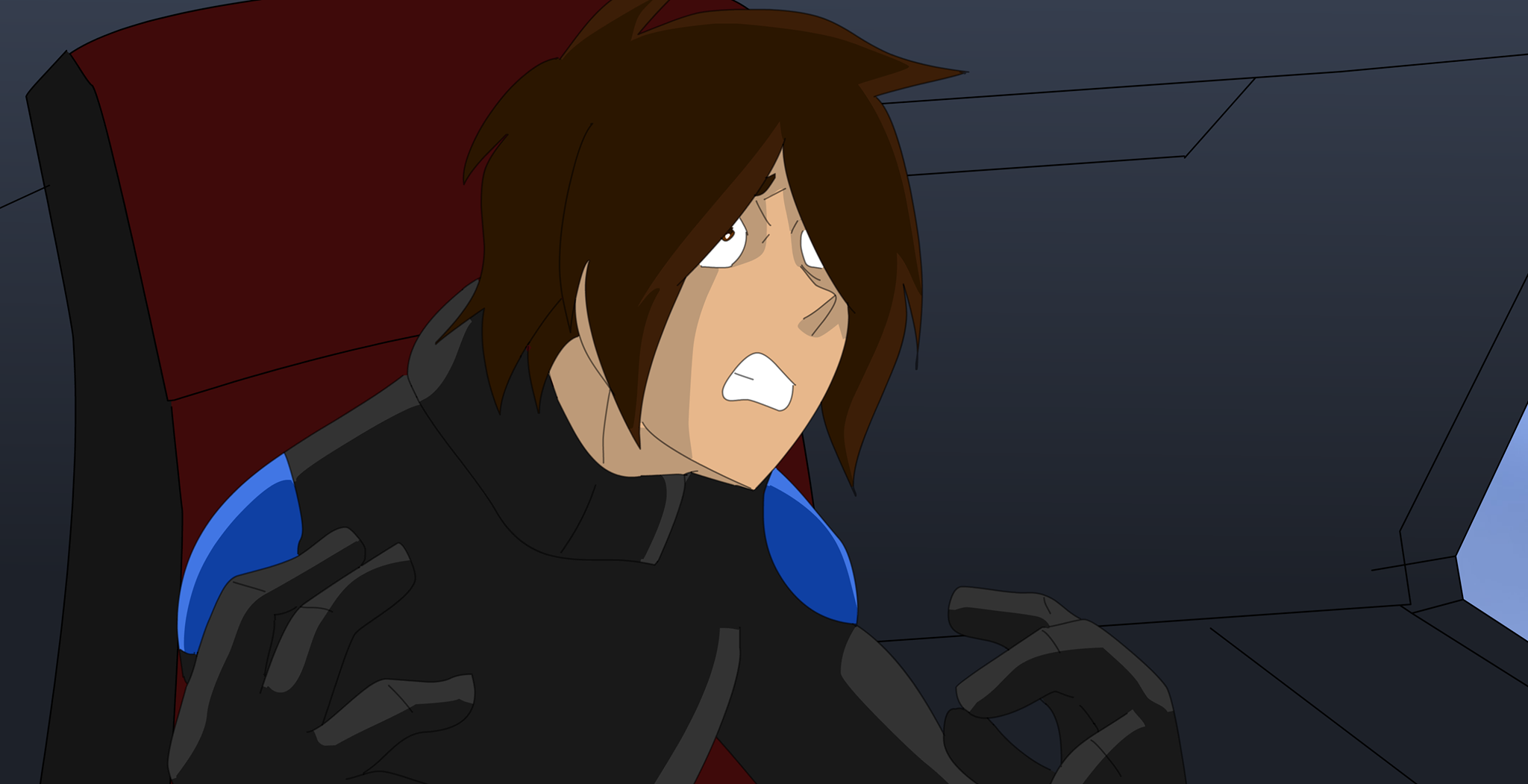
Episode 6 was the best episode I managed to do during the first season run. But it was here when I came to my crossroads. Do I go into season 2 using the same method I had done for years or do I risk it and switch it up for better quality? I chose to switch it up. But the problem was finding an animation program that would be natural for me. I have a full time job, and I do freelance work, plus being a writer. So I needed to find a software that would allow for the easiest workflow possible.
I tried a few, but eventually I realized a new update for CSP allowed for animation. So I upgraded to the full version and jumped down the rabbit hole.
I had finally said goodbye to both Flash and the first season of my animated series.
Clip Studio Paint
It was so weird transitioning. It was 2016 and for 10 years I had been animating solely in Flash. It was all I knew, it worked for me. I may not have made the best looking animated series, but I did it. As a 1 man animation studio, I managed to do it. So here I was staring at a new interface, one I had gotten used to drawing in, but now approaching it from an animation standpoint. It was weird.
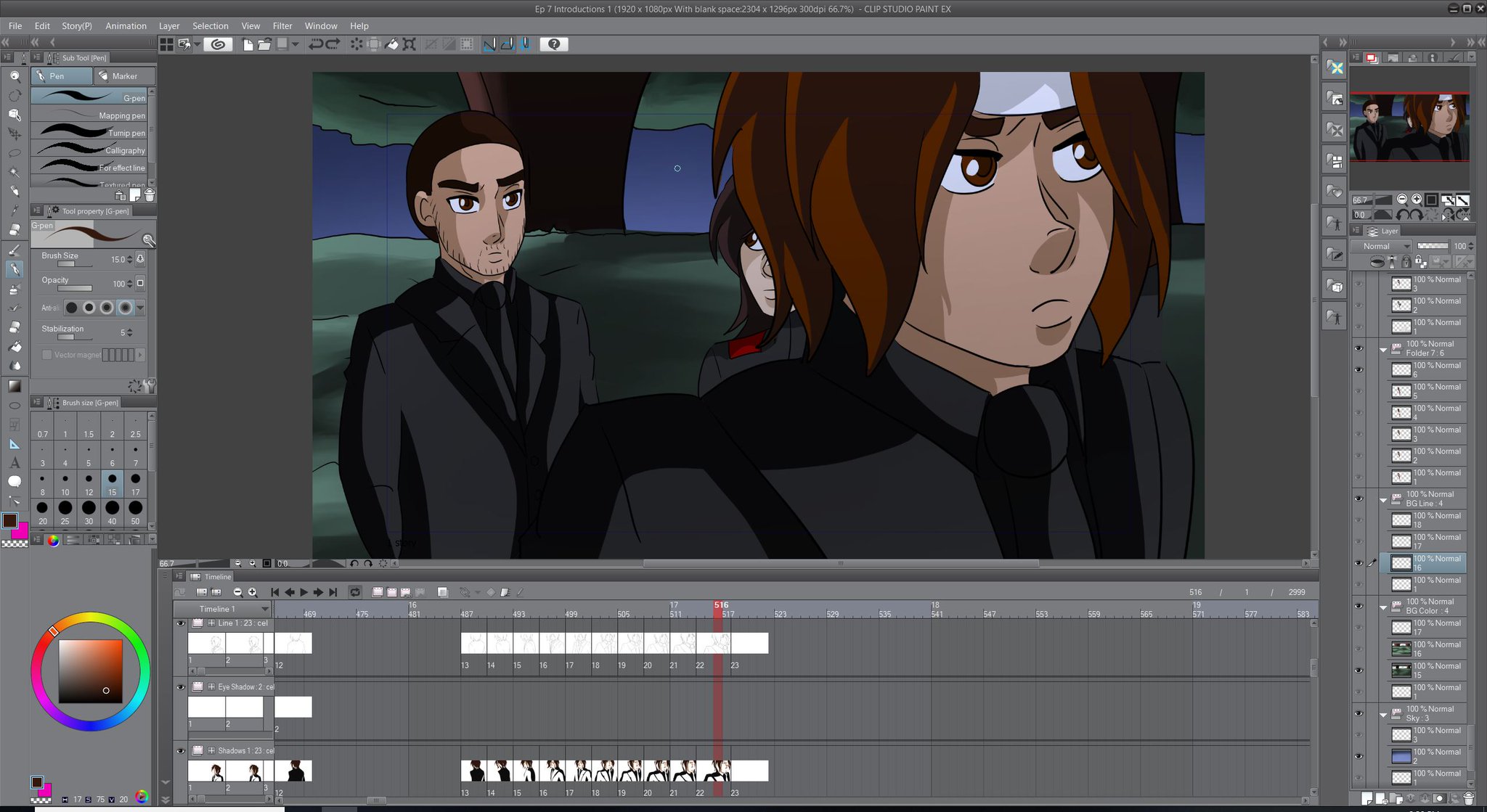
Screen from Episode 7, which is nowhere near where I started out in CSP. But the interface was different than Flash and I had to get used to it.
The first test I did using CSP was to take an animatic I had done years ago for Episode 8 and animate it in CSP. It was awkward and rough, but it still looked better than anything from season 1. So I was off to a start.
To end 2016 I animated a short, silent “Epilogue” episode to season 1 entirely in CSP. It was the first real look I gave myself to what season 2 could possibly look like. I was off to a good start, but I knew it was going to take a while for me to find a comfortable workflow for this. With change, came both pros and cons. Honestly, the cons did make me struggle and often debate going back to Flash.
Pros: CSP felt better, drawing wise. I was no longer “fighting” with Flash to draw my lines. Line art and brushes were just leagues better than anything Flash offered. Colors looked better, just everything felt better.
Cons: In Flash I would scrub an audio mixdown of the scene, so I’d animate to that. CSP did not have an audio option. This meant I couldn’t import and animate to the audio of a scene directly in CSP. I could no longer just use 1 animation program. I had to make a workaround. That workaround was to still use Flash for the animatics and then import that animatic into CSP and animate over it for clean up and colors. This brought up another concern, CSP only (Windows) accepted AVI video. And if you’re not aware, AVIs are HUGGGGGGGGE. Which again, created a new concern, I don’t make short animations, so what originally would be 4-5 minute Flash files were not going to work. They’d end up being 6 gb and CSP couldn’t import files that big. I’d have to cut my scenes down far more to be like a minute top to get the animatic into CSP. At this point my folders were increasing in size because of all the separate files that were close to 2gb I needed for an episode.
As you can see, the cons were a lot bigger than the pros and it really made me question if this was going to work. But I was determined to push through it. I needed season 2 to be better.
2017 became mainly a “teaching” year. I didn’t like it, but I accepted that season 2 wasn’t going to be ready and that I needed to take time learning and creating a new animation process for myself. Eventually I did find a groove, and it worked.
- Mix audio from VOs
-Animatic w/lip flaps made in Flash to the audio file
- convert to an AVI
- Import the AVI to CSP
- Animate/full clean up over the file
- Export AVI
- Merge AVIs in Premiere Pro to complete the episode.
It seems like a lot but it wasn’t that bad. But I no longer was doing everything in 1 program. The quality improved from season 1 was pretty tremendous so I was happy.
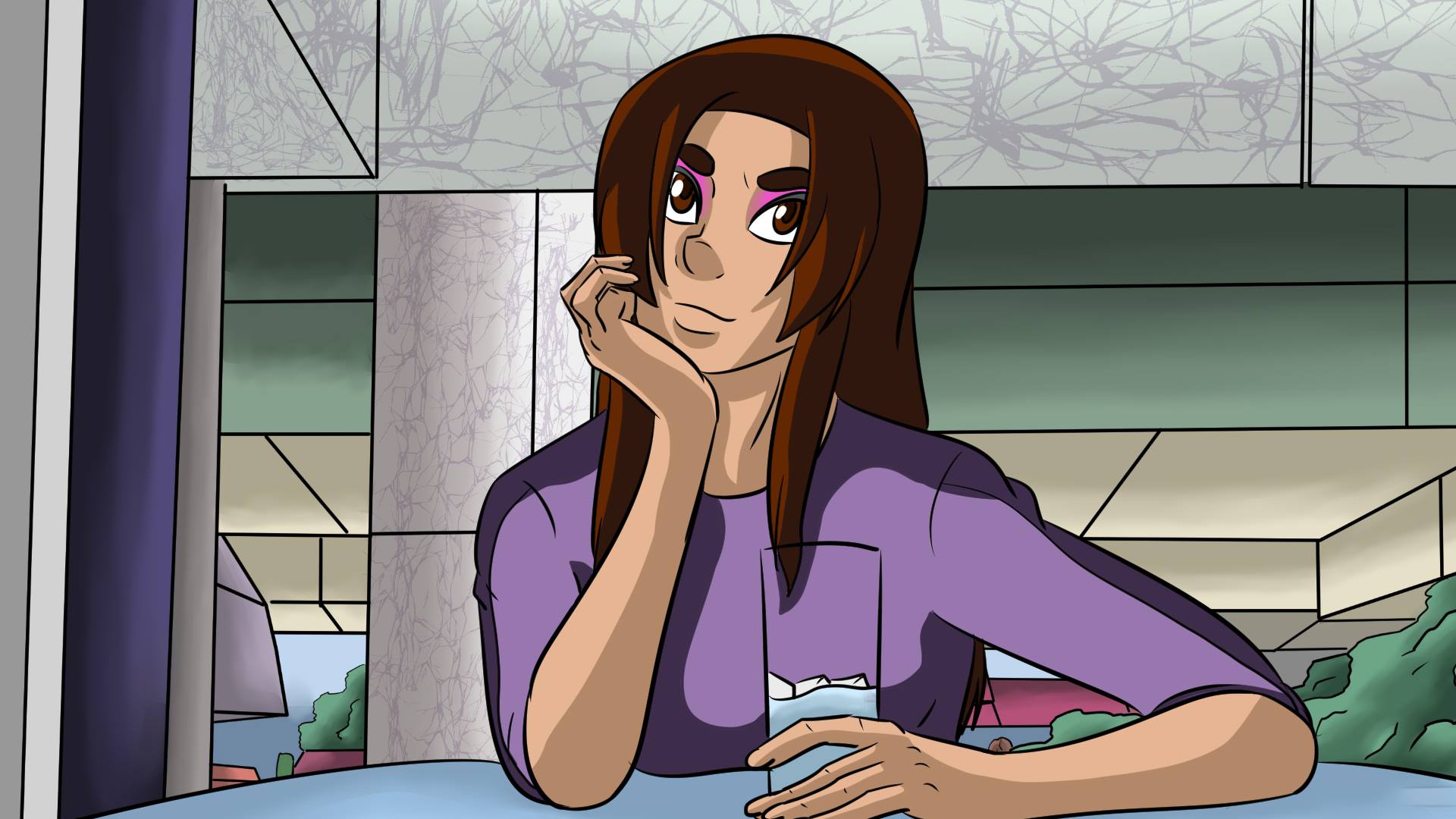
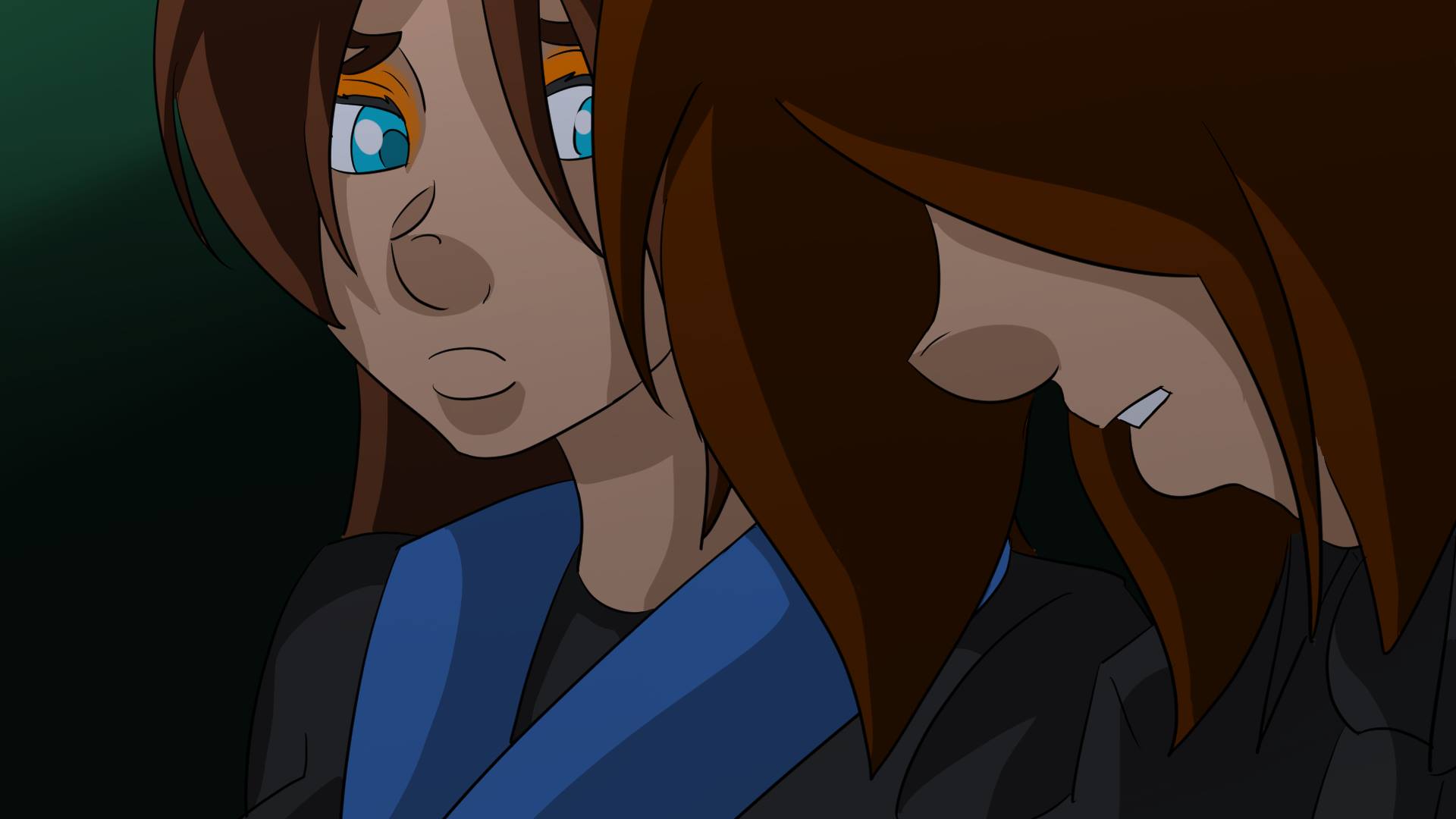
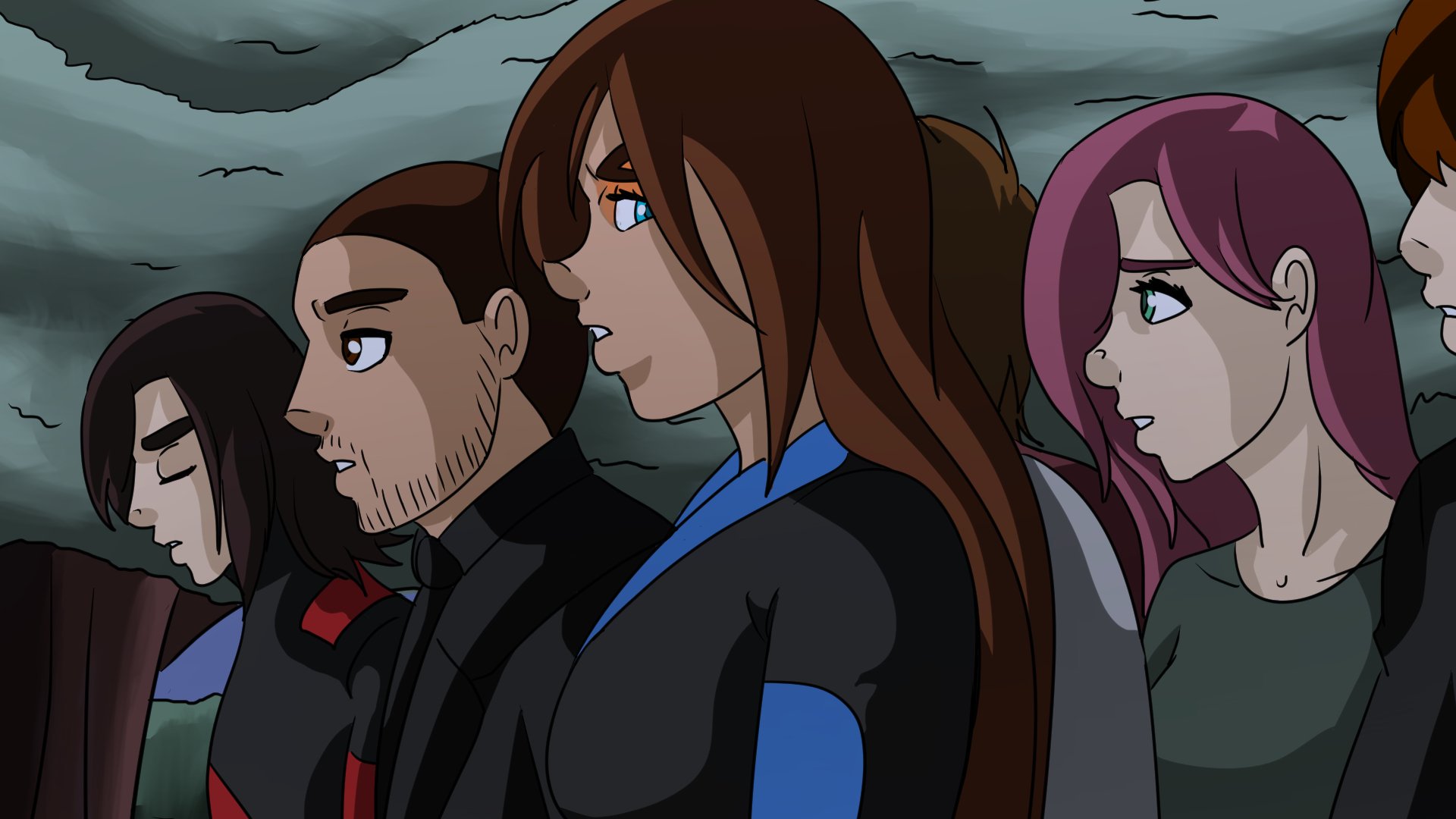
2018 continued the “learning” experience, however this was probably when production for season 2 really took off. I managed to finish Episode 8’s clean up and finished Episode 7’s animatic and a good chunk of its clean up. Still no release, but production had finally settled down.
CSP then made my life easier when they released a new update. One that included Audio. I literally cried. Now I could go back to using 1 program and as such, remove the need to importing huge AVIs. They also made some other QOL changes. Like being able to copy and paste Frames directly from the timeline. Before this, I had to insert each duplicate Frame manually. Which, as it sounds, was a pain. So that being added has made my life, specifically with lip flaps, tremendously easier.
Episode 7’s clean up is the first episode with this QOL improvement and it’s been going fast. I’ve had some health problems in the beginning of 2019 that halted that speed, but it’s still going faster than 8 did.
As of now CSP is something I highly recommend for animation. When I first started experimenting with it in 2016 a lot of people thought I was crazy, I guess I was just ahead of the curve.
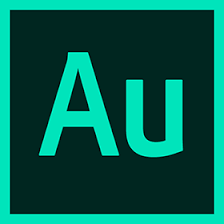
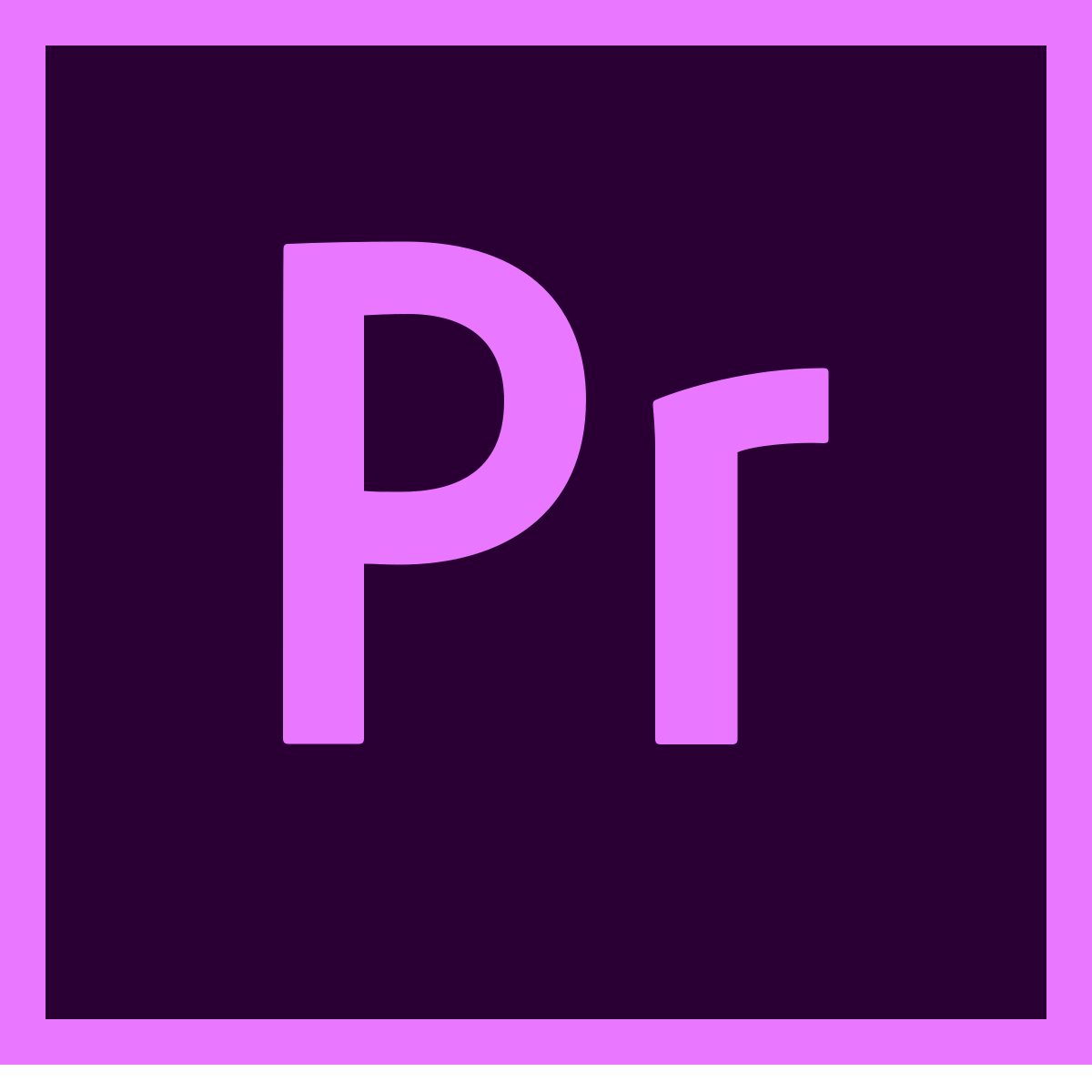 Audio and Video: Dynamic Collaboration
Audio and Video: Dynamic Collaboration
With the animation stuff out of the way, I can now go over everything else in the process. Audio is where the lifeblood of the work comes into play. Without it, you’d have no series. Voice actors, music, sound design, all of these assets makes brings your creation to life.
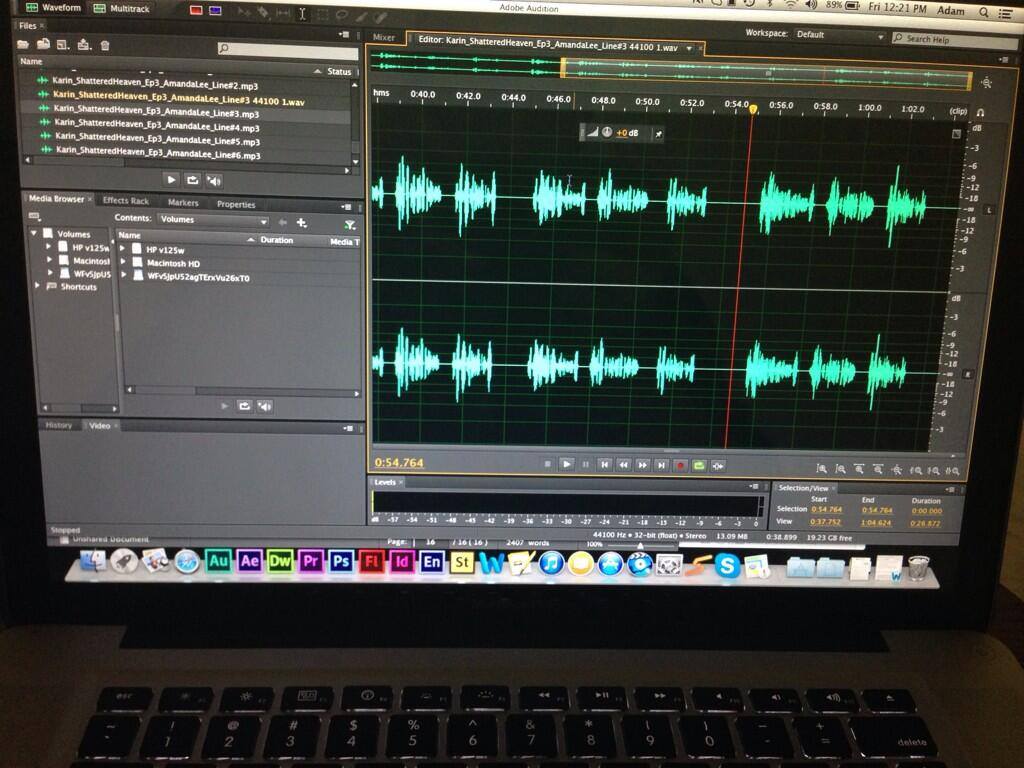
I have always used Adobe Audition for both my own recording and for audio editing. It just works. The basic process is as follows, get the lines from my voice actors, throw together a simple “audio skeleton” to create a mixdown and establish the pace/flow of the scene and then export a single audio file to animate from. Simple!
When it comes to recording voice actors, it’s mainly remote. But sometimes you’re able to get some together to rent some studio time.
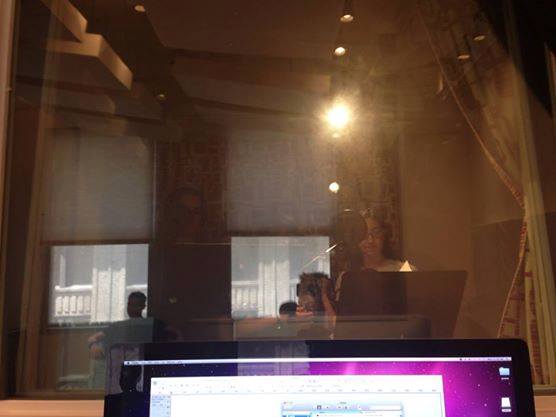
During season 1 I never realized I could import video into Audition, so when it came time for SFX placement, I did everything in Premiere. It was a mess to say the least.
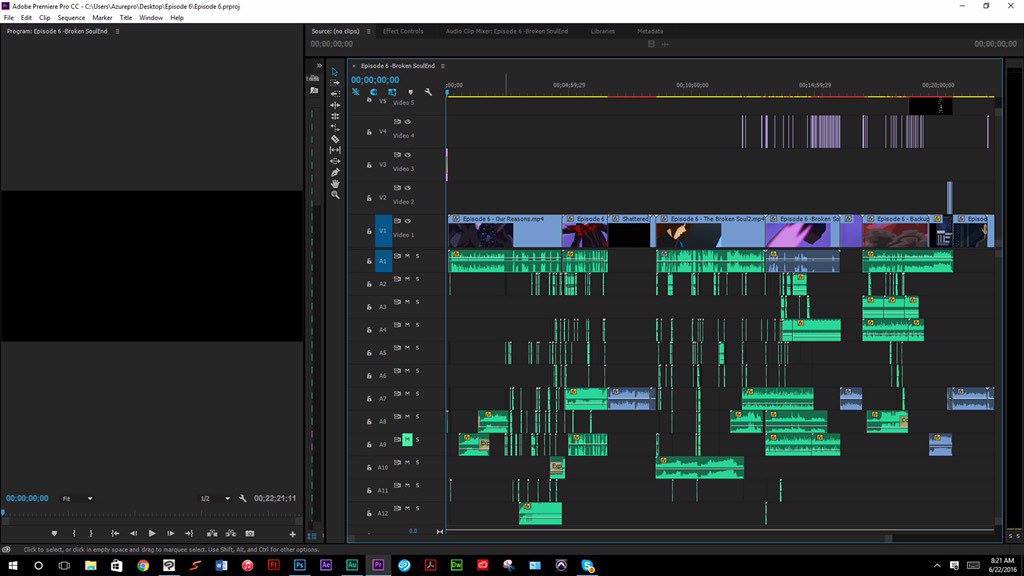
It was not fun. Premiere isn’t really meant for audio editing so it’s not the most ideal situation. When I realized I could do it with Audition, I immediately switched and it made my life for season 2 so much easier.
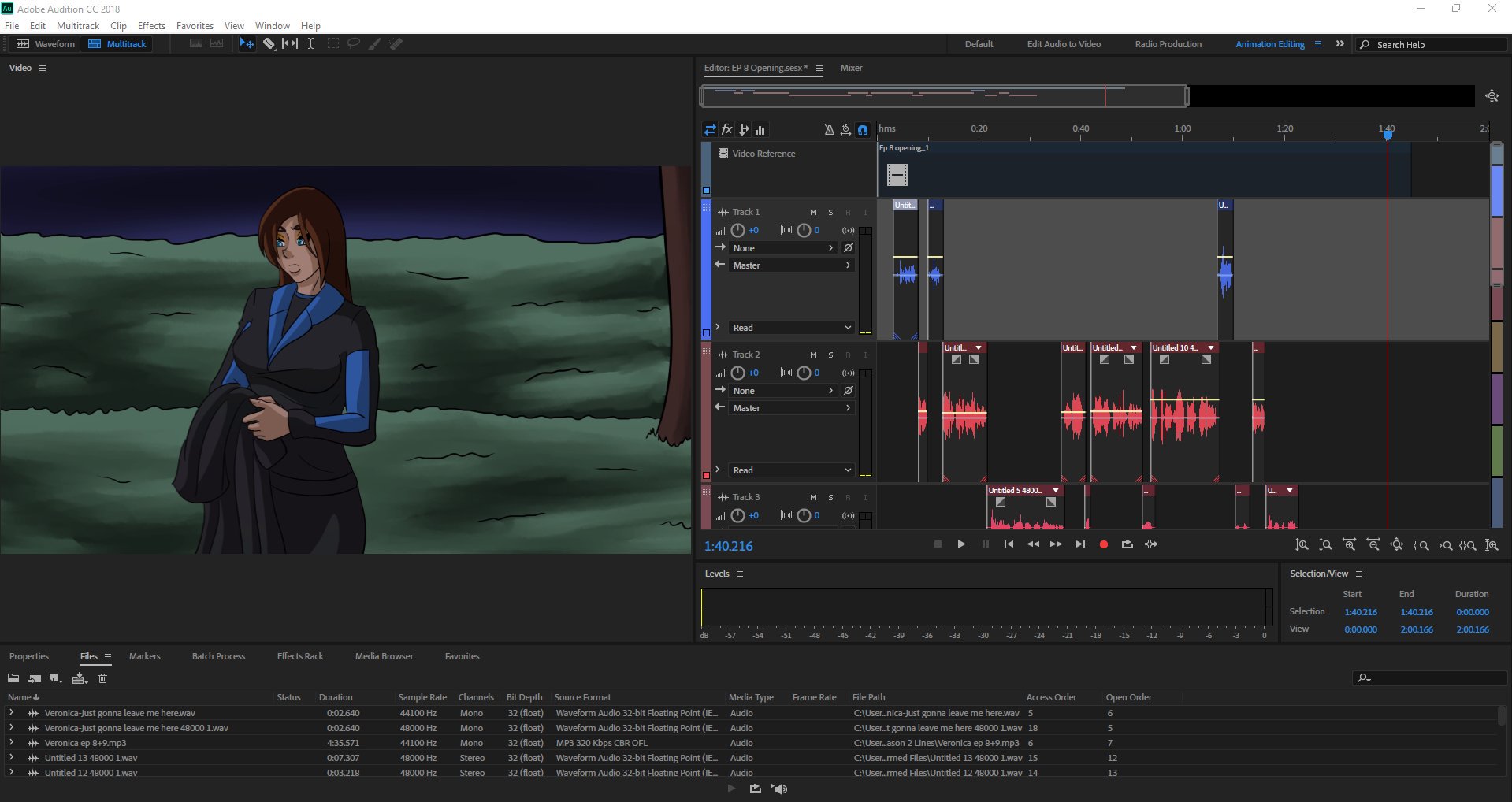
Editing adding SFX/editing audio for a video in Audition is just the smart way to go. Plus with Adobe Dynamic Linking, you can import the audio from Audition directly into Premiere and vice versa. So if you’re in Premiere and you want to polish the audio track, you can have it open directly in Audition to do so. Then when you save it in Audition, the file is automatically updated in Premiere!
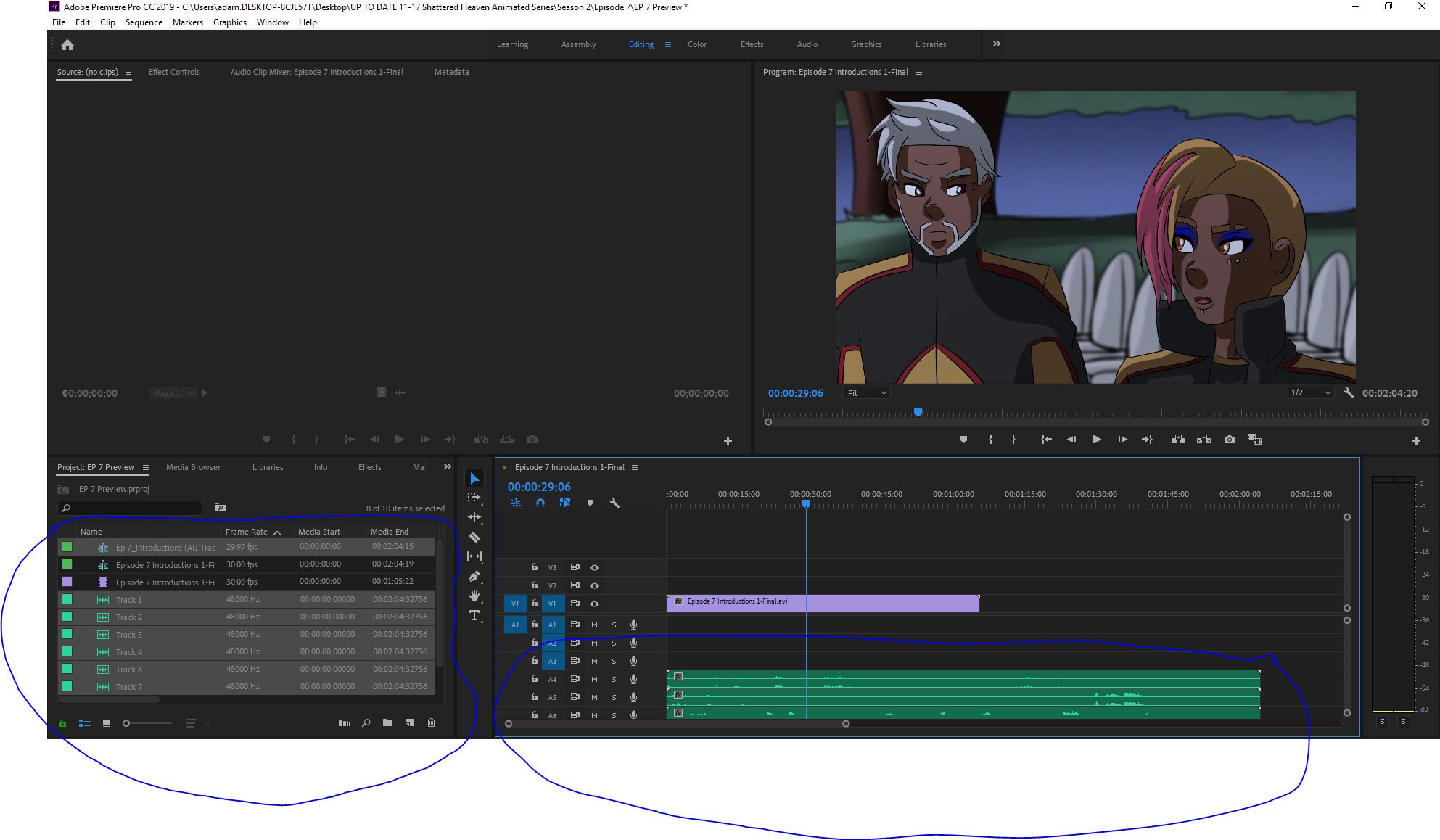
Exporting/sending the audio tracks from Audition directly to Premiere Pro for final video rendering is the smoothest way to go.
Premiere Pro has always been what I used for final video rendering, that much hasn’t changed.
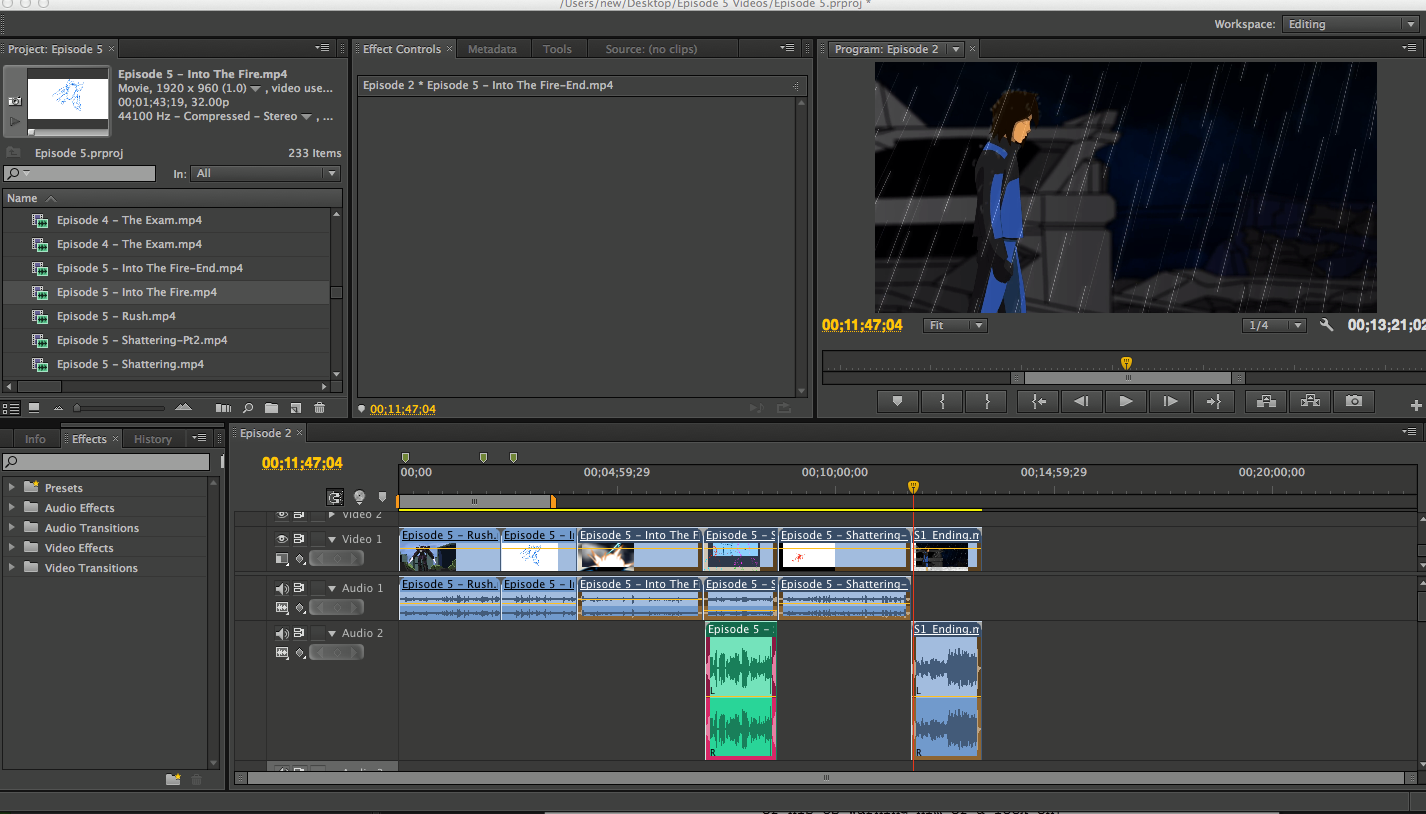
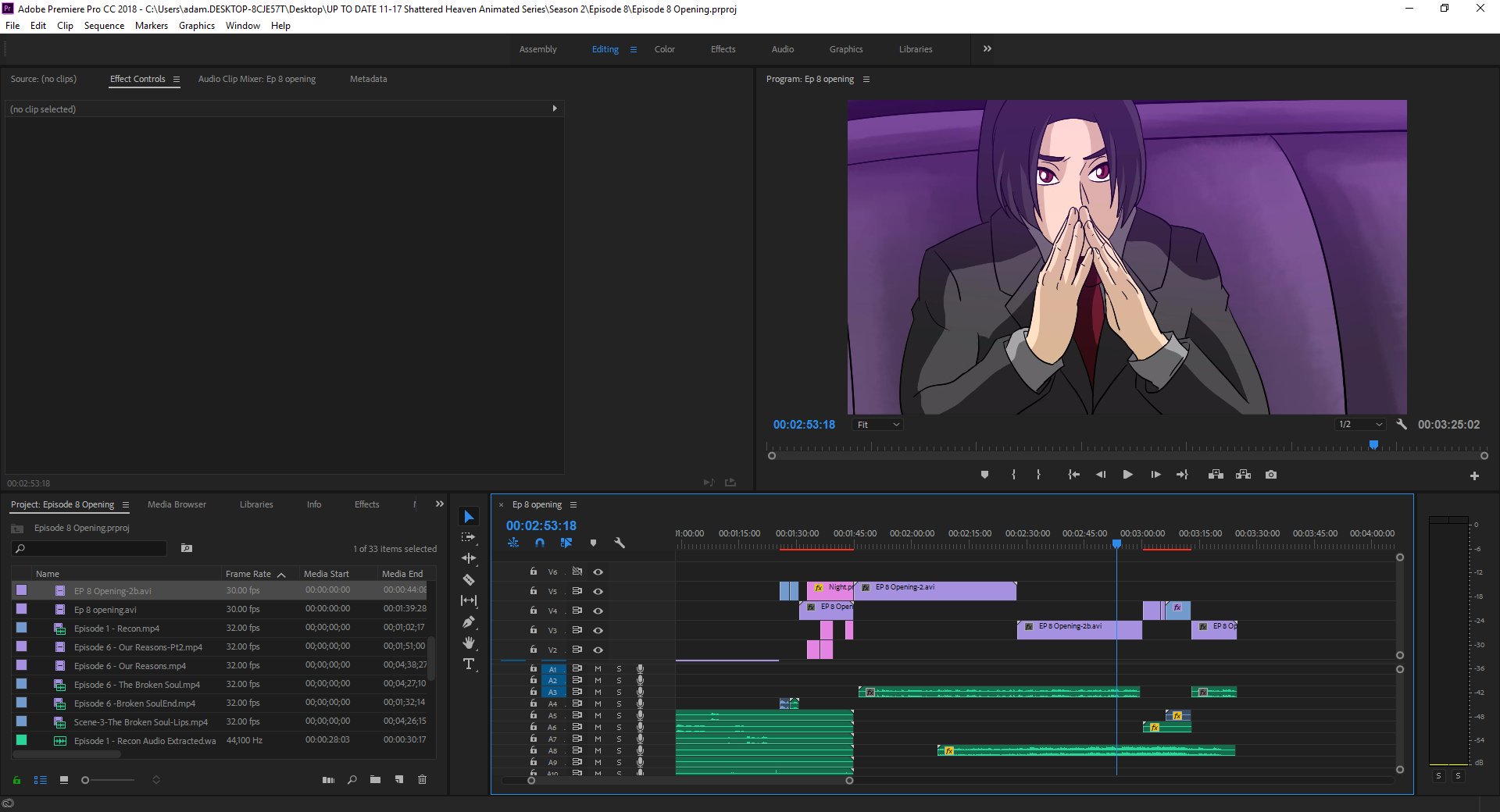
The timeline is simple to work with and it’s just easier to take the individual scenes exported from CSP and put them together to create a final episode.
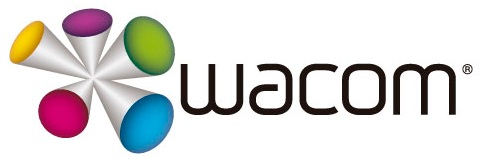 Tools
Tools
Okay, so I’ve explained the software process to making an episode. But how do I actually do it? The simple answer is “Wacom”. I’ve been using a screen tablet for over a decade. My first was a basic Cintiq that acted as a second monitor.
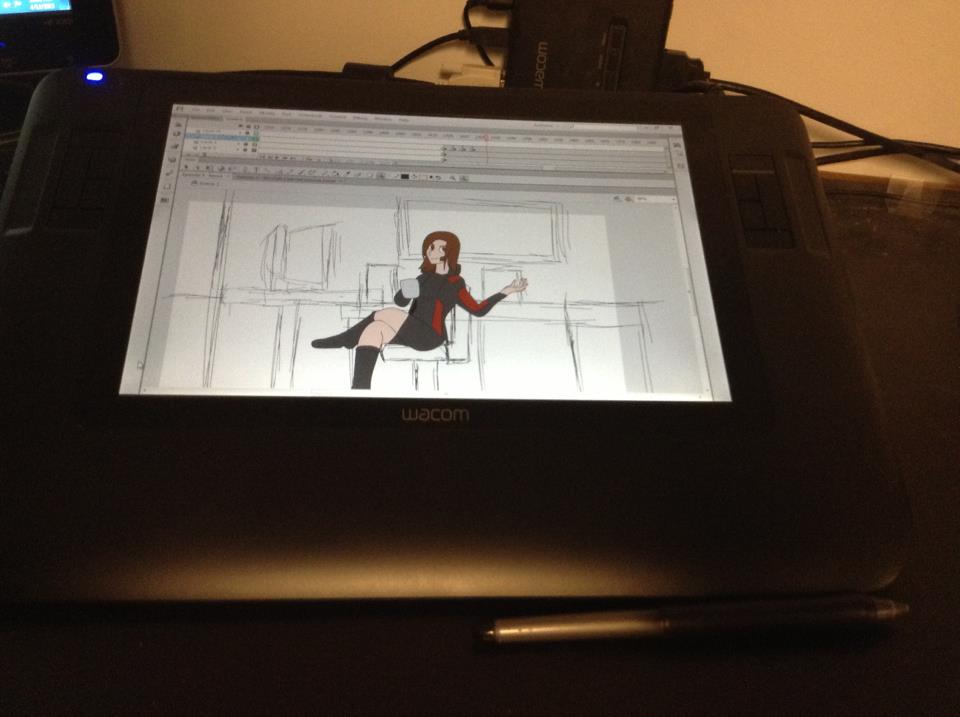
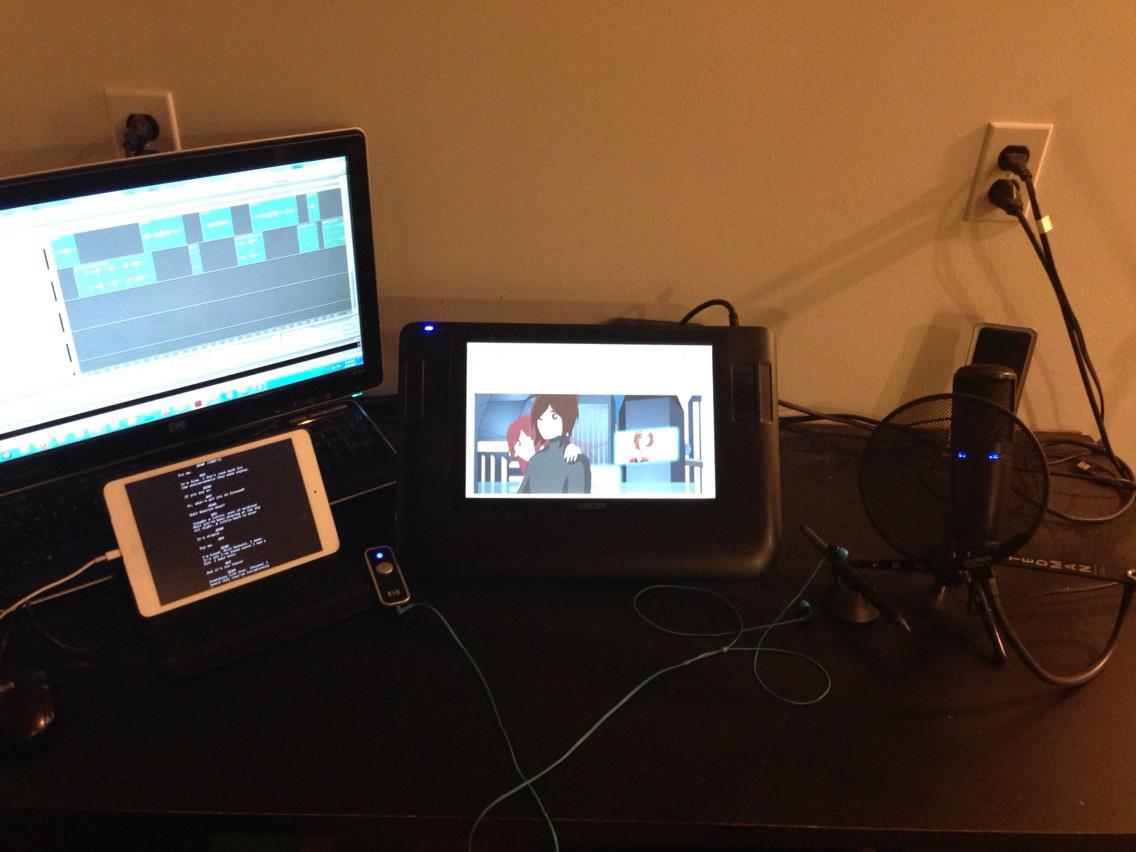
CINTIQ 12WX
Eventually as my life got busier and it was harder to keep things efficient, I needed to be more “portable”. It’s tremendously hard to keep an animated series going on your own, eventually people either cave from the pressure and stress.I’m pretty much too stubborn for that, so I just needed to update my workflow.
That’s when Wacom released the Cintiq Companion. A portable Windows 7 Cintiq.
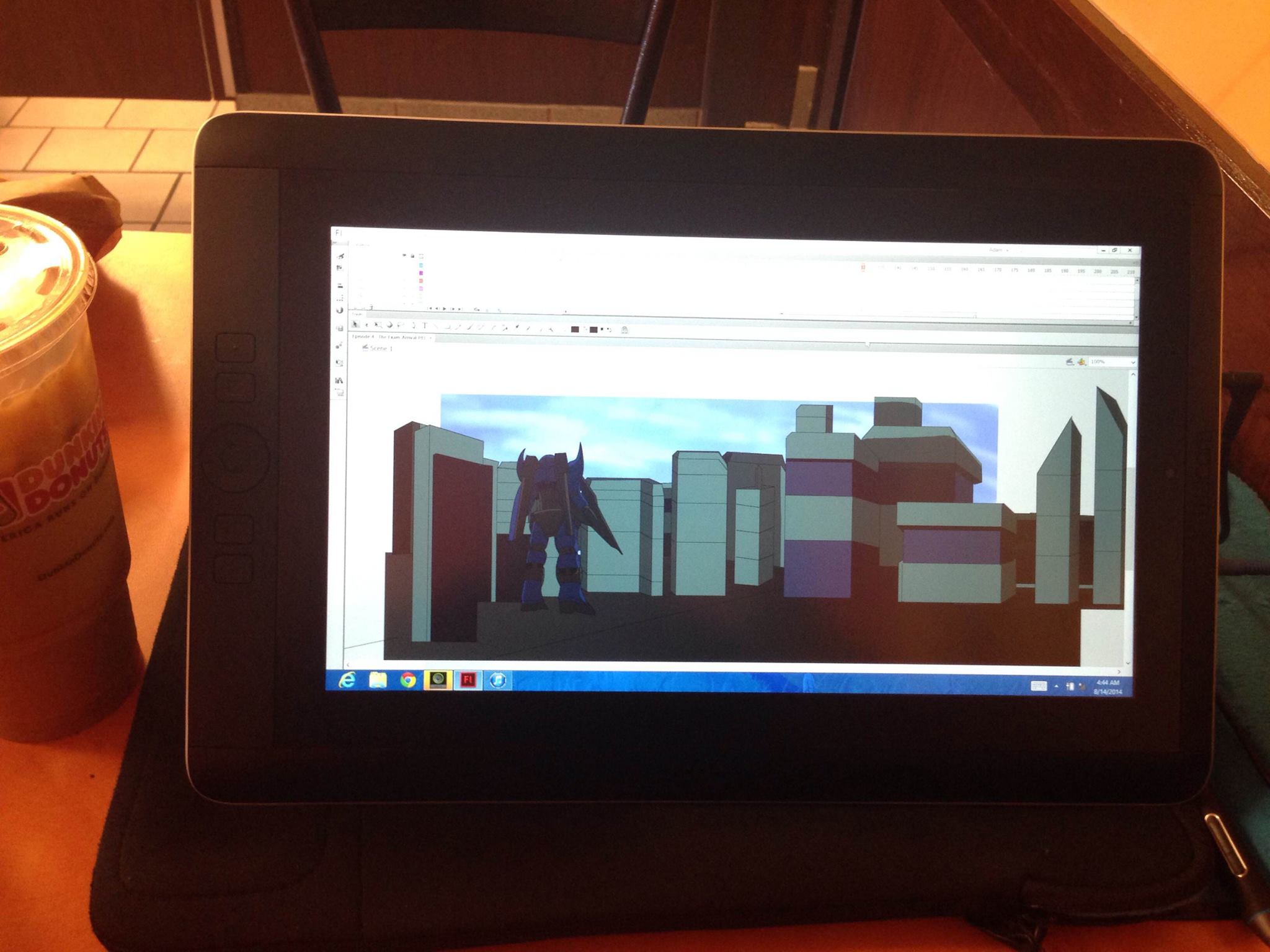
So why go with something like this instead of an Ipad? Well to be simple, I need “full” programs that have “full” capabilities, not simple drawing apps. I did have an Ipad mini and it was nice for simple sketching and drawing, but animation, audio, video,etc, it didn’t meet the portable “studio” requirements that I needed. There’s nothing wrong with using an Ipad for art, they’re great, but I’m not doing just art. I need a studio in my pocket more or less. App based programs were always heavily watered down versions of their more powerful full counterparts. When I got the CC, the Ipad pro wasn’t out yet.
While the CC was good, in 2017 I needed a computer upgrade. By then, Wacom had their 3rd generation of the tablet released, known as the Mobile Studio Pro.
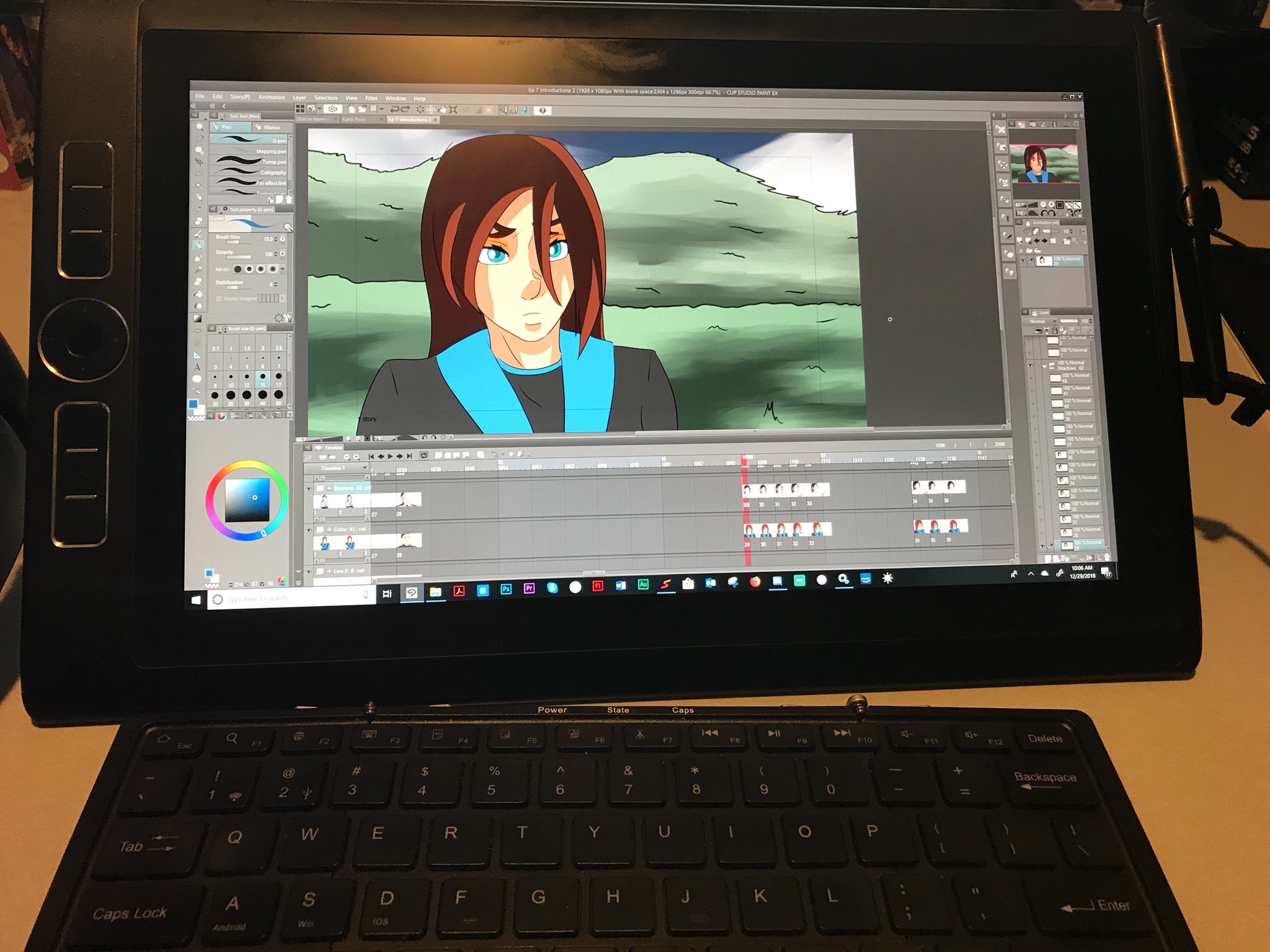
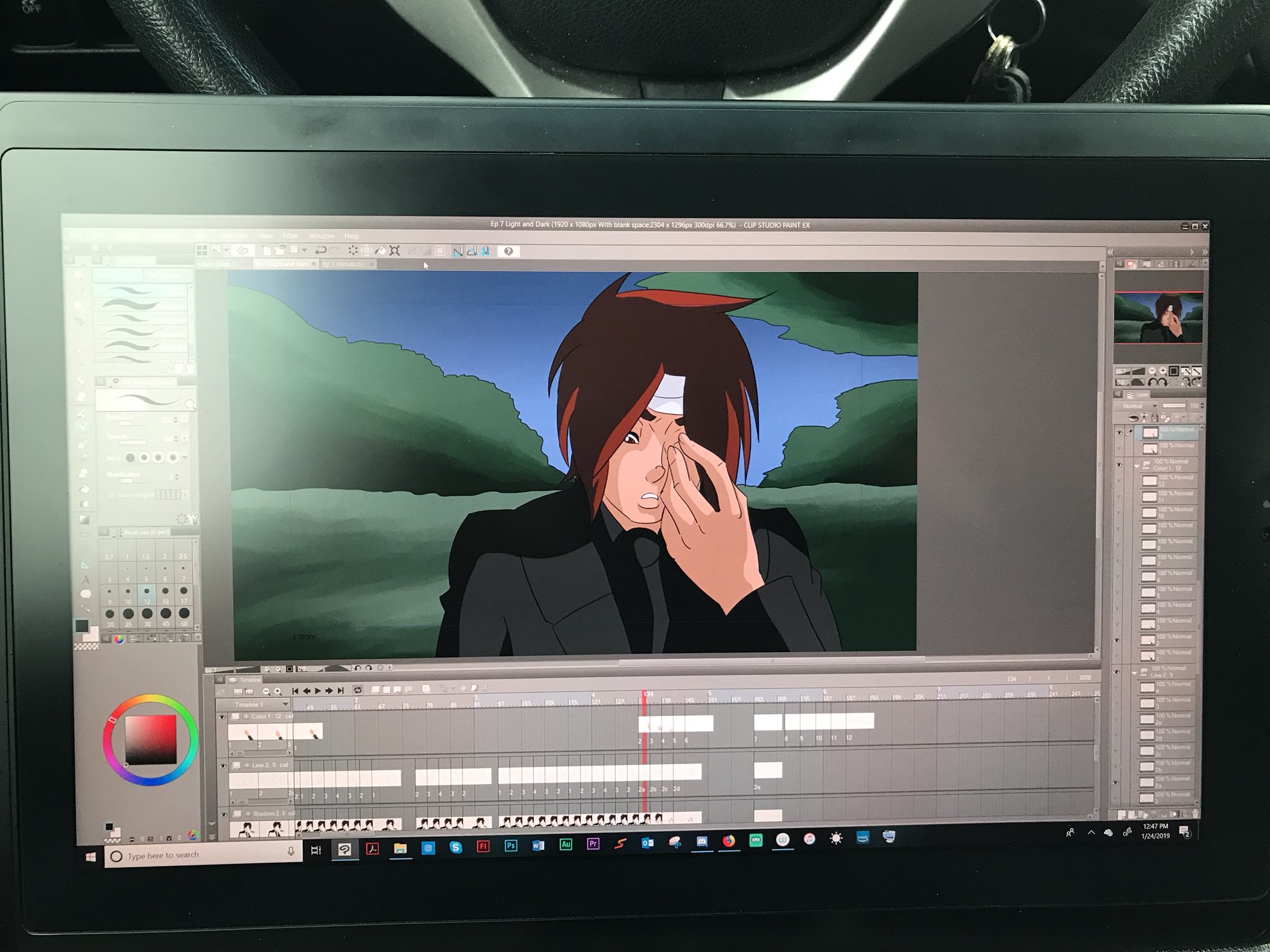
More powerful and a thinner design, the MSP is what I’m currently using. I have the 13 inch high-end model. The 16 inch was tempting, but 13 is easier to travel with.
Specs: https://us-store.wacom.com/product/wacom-mobilestudio-13-S01#/undefined2
It’s an investment, definitely not a cheap product. Wacom allows you to pay it over time with credit so it’s “doable”. I only recommend it if you’re really serious about this sort of work and have a need for portability. If you’re just looking to draw and do those sort of things, then an Ipad Pro would probably be just fine. But full production stuff, I’d recommend the MSP. It’s made continuing this passion project doable for me. My productivity is far more efficient now than it has ever been.
Season 2
I’m really excited about season 2. It may have taken longer than I wanted, but I’m happy with my own growth as both an animator and as a writer. Story wise, there’s a lot that I’m looking to explore with the new season. Already experimenting more with body language and even backgrounds, and I hate backgrounds! As always, Shattered Heaven will be a learning and growing journey where I try to be better than I was before. I’m proud and blessed to work with the friends that help me make this happen, voice actors, composer and sound designers. I’m still pretty much a one man team when it comes to animation, but the support system I’ve gathered is pretty extensive.
My current “home” studio/office.
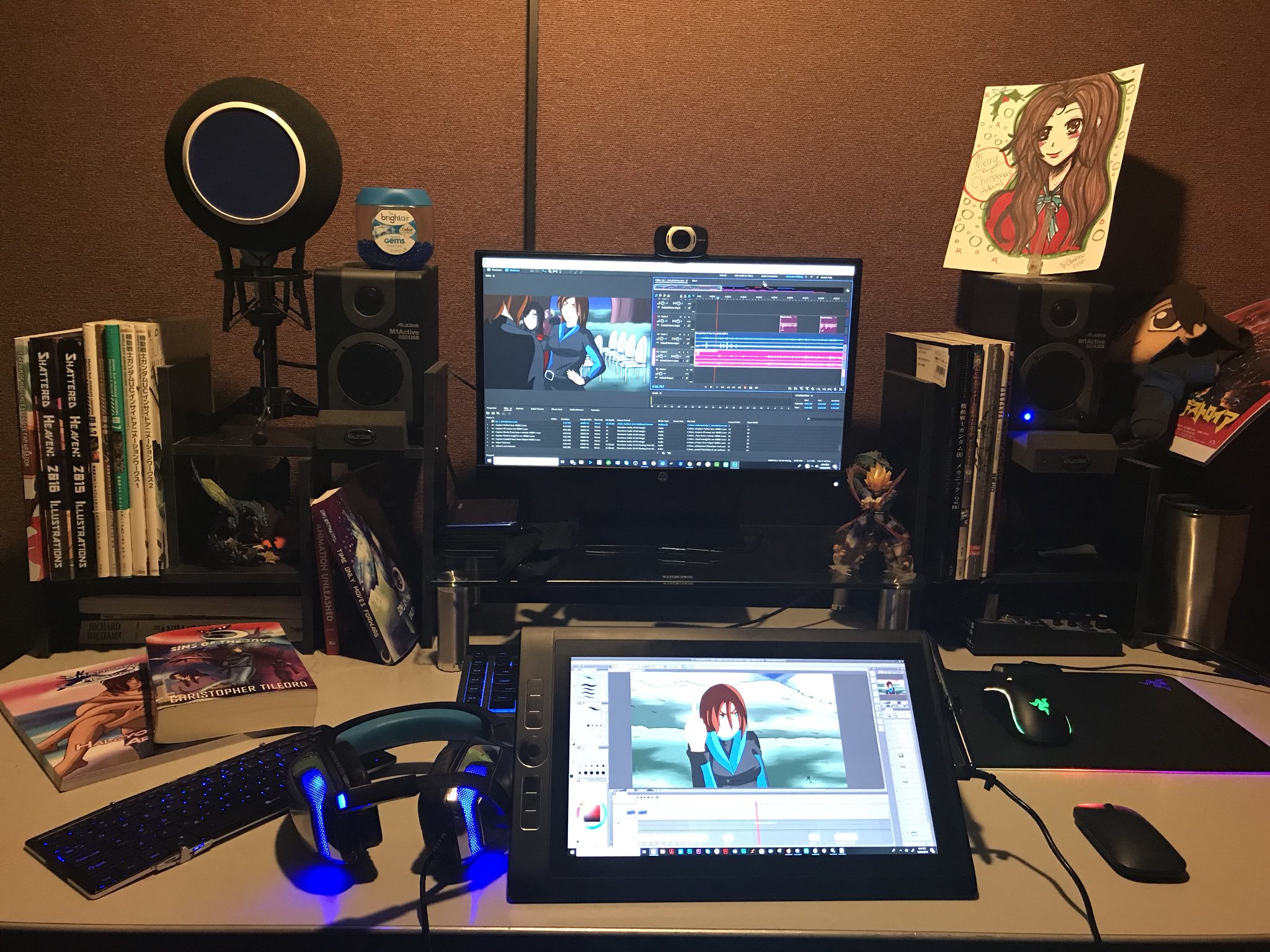
Season 2 will be debuting later this year! Thank you for the memories!
